Request a video call
Confirm Your Virtual Consultation
Dr. Rama Institute for Fertility Profile Overview
No better approach, No greater way to become Pregnant ...
Welcome to Dr.Rama’s Institute for Fertility ...
Dr.Rama’s Institute for Fertility is a complete Infertility treatment centre founded by Dr. Papolu Rama Devi. Her clinical efforts have won national / international recognition, enabling her to assemble an exceptional team.
Our goal is to help you build a healthy family as efficiently, quickly and cost-effectively Infertility Treatment possible while taking into consideration your personal needs and situations.
So far, we have treated thousands of Infertile couples & individuals. We understand the emotional and financial stress couples are undergoing and we take care for that. Our Patients feels happy with us because of our heart flutters along with theirs for the cause. Also we empathies with them because of our utmost care, concern and affection, the couples feels our clinics like home. We have expertise in treating infertility related problems from most simplest to most difficult, resistant cases of infertility, including woman over 40 & those who have failed at other IVF Centers. We are committed to combining excellent medical care with a warm, friendly approach.
We assure you that you will feel most comfortable and relaxed while undergoing treatment with us. You are in safe hands of Infertility experts and most experienced Infertilitly Doctors, and our other team members, which will work for one single goal – "to convert your dream into reality".
Dr. Rama's Infertility Clinics has been established in the year 1991 in Hyderabad, Andhra Pradesh, India. In due course, expanded the infertility Treatment services at four different cities in Andhra Pradesh.
The Primary Objective of our fertility Centres is to offer affordable infertility services under one roof (Treatment of Fertility till Delivery). We offer our 17 years of experience, expertise and latest technologies in the area of infertility and treatment plan designed for individual needs.
Our Fertility Clinics are Best among the first few comprehensive dedicated infertility hospitals in South Asia. Our Clinics have state-of-art facilities..
We offer :
-
IUI - Donor / Husband
-
IVF - ET
-
ICSI - ET
-
Sperm retrieval by MESA, PESA, TESA
-
Laser assisted hatching
-
Blastocyst culture
-
Cumulus cell coculture
-
Sperm banking
-
Freezing- (embryo /sperm/oocyte)
-
And a lot more.....
Why Dr.Rama's Fertility Clinics
Quality excellence :
We operate our system under high international quality standards & we promise our patients
-
To give personalized, evidence based approach to treatment leading to highest standard of quality & care
-
We respect couple’s request for confidentiality, privacy & individuality.
-
We ask patient’s feed back to improve our service.
Transparency :
We believe in open, transparent system, we provide treatment information to couple, in order to understand their fertility problem.
Personal care :
We understand the stress of infertile couples, and to ease it out for couple at every stage of the process, we give individual care, warmth & counseling.
Our strength – our team
The skillful & experienced team of Infertility doctors & embryologists ensures that our centre is at the fore-front of excellence. Other range of experienced supportive & caring professionals like surgeons , nurses, ultrasonographers, counselors, administrators are dedicated to give couple the best chance of completing their family.
Please Click Here to request more information From Dr.Rama's Institute for Fertility.
Dr. Rama Institute for Fertility, Hyderabad, India Profile Details
Infertility often creates one of the most distressing life crises that a infertile couple has ever experienced together. We as a fertility specialists Doctors well understood their emotional aspect and provide on ethical, meticulous research based approach to fertility treatment. We believe in ladder approach.
Our Philosophy ...
Tradition :
Our clinics are one of the longest standing fertility clinics having four regional centers in different locations in Andhra Pradesh, India.
Concern :A conservative clinical approach that aims to minimize medical & surgical intervention & maximize the chance of pregnancy, by offering optimum treatments & options.
Mission :
Our mission is to resolve fertility problems in the right way for each individual patient. We do so unconditionally with regard to age, status, race, beliefs & medical condition.
All options under one roof
To value couple’s valuable time, we cater all requirements under one roof. Consultation, ultrasound monitoring , laboratory investigations, counseling, operative procedure like laparoscopy,hysteroscopy, pharmacy, HSG, ovum pick up, embryo transfer & well equipped operation theater, all under one roof.
365 days & on call 24/7
As fertility treatment procedures may involve week ends, we schedule care for our patients for 365 days & on call duty 24/7
Our Motto in not pregnancy, our goal is delivery of healthy baby.We also deal with high rise pregnancy management (Diabetes complicative pregnancy, Hypertension complicating pregnancy, recurrent pregnancy loss). In co-ordination with neonatologist we take care of prematurity of new born. We also offer fetal reduction in case of multiple pregnancies.
We specialize in surrogacy and donation sperm / egg. Waiting period for this is minimal. All legal formalities, correct matching - we do take care.
As we take care from infertility treatment till delivery, our take home baby rate is high. We treat every precious pregnancy and take all precautions to prevent abortions, premature delivery, neo- natal deaths, etc.
We insist upon nutrition and nutritional supplements. We prevent chronic and acute anoxia of baby during anti-natal period, and during delivery.
We proudly announce children born in our hospital are healthy, highly intelligent and affectionate.
We at work
Our Infertility Clinic Services : Our Infertility clinic is a one stop Hospital which offers a comprehensive range of infertility services. We have all the facilities require to deliver a full range of services for the infertile couples and required assistance in conceiving. This ensures infertile patients are required to visit only one Clinic for all stages of their diagnosis and infertility treatment.
Our branches are also located at Vizag, Vijayawada, Rajahmundry and Guntur.
Reception :
Four beautiful young ladies dressed in uniform greets you with smile at reception. You can enquire anything either in person or phone or mail all the time when you are in hospital they accompany and guide you what, when, and where services are given. Feel free to talk to them.
Waiting Lobby A Centrally air conditioned large spacious, waiting lobby for our precious couples.
Counseling and Consultation:
Counseling one of the counselors will take charge of you. She will take all the details of your past record and explain what is your problem, shares your emotional burden, also explains the available treatments, their costs, schedule of your visits etc.
Fertility Doctors In Asia
Consultation Either Dr. Rama or one of the senior doctors will go through your file, study all the factors, if necessary further investigations will be suggested to come to a final diagnosis and thereby decide plan of action. Feel free to discuss all your problems, doubts with us. As infertility is not a physical health problem where there is no pain, only mental agony is there, it is very essential to understand the problem and keep confidence in the doctor and continue the treatment till the healthy baby is in your hands. The results depend upon the mutual effort put by the couple and the team working for you, finally blessing of Almighty. We will try to reduce your emotional burden but at the same time you must be willing to think positively. Even all the factors and the procedure results are good, if the patient is psychologically under stress, results will not be encouraging.
Suggestions: Come to us with peace of mind and happiness; leave the burden on our shoulder.
Step inside as two; go out as three or four. (Buy one and get one free).
Your ambition is ours. Your Success is Our Success. So let us work for our Success.
Diagnostic Tests :
Full fledged hematological, histopathological, bio-chemical, micro-biological and hormonal assay are done here. Under the able guidance of retired professor in pathology, six expert technicians work in the lab. Hormone analysis is done with Vidas form Biomerieux(France).
The advantage with this instrument is we can do more no. of parameters at one time and results come within 1 & 1/2 hour, which is very essential while treating ART procedures.
Semen Collection Room: We have separate rooms for male partners and donors. The rooms are neat and clean with attached toilets. In case of difficulty in collecting the sample pictures, audio visual aids, vibrators are provided. Sometimes medicines also can help ejaculation.
Scanning Room :
Routine X-Rays and histosalpingogram done here. Expert doctors conduct the procedures comforting the patients.
All the doctors are experts in diagnosing gynecological problems, fetal abnormalities and follicular study. Prompt services are provided without waiting.
Fertility Drugs:Pharmacy we keep the stock of all medicines after checking the efficacy to avoid less potent and ineffective drugs. The medicines which are needed to maintain cold chain strictly followed. The three qualified pharmacists maintaining round the clock. They explain in detail and write on the medicines packet how to use each and every medicine.
Operative Surgency :
Fertility Doctors In Dubai
We have a well equipped theatre to perform surgeries like diagnostic and operative laparo- hysteroscopy, myomectomy, laparotomy, microscopic recanalisation vas and fallopian tube, caesarian sections etc.
We also developed a special procedure for chocolate cyst (collection of menstrual blood in the ovary). Normally it is treated as a major surgery either through laparoscopy or conventional open surgery. Here we do without operation just through ultra sound guided aspiration of chocolatecyst with a simple needle and instill a drug which damages the cyst wall, so that there will not be a recurrence. It is cheap and non-operative procedure. Similarly we do fetal reduction in case more than two embryos are there. The operation theatre is attached to a post operative room where 24 hours monitoring is there.
Nursing Station
IUI - Room Strict sterilization is maintained, all the procedures are done under aseptic precautions and with disposables. Even after 12 cycles of IUI patients never had a single case of infection. We try to prevent pain, reaction and infection during this procedure. There are six tables to perform simultaneously.
Embryology Lab at our Infertility Clinic, Hyderabad
The lab is located in the third floor where we can avoid some amount of dust, fumes etc. The entrance has got a air filter and before entering we wash the feet and wipe them. Immediately after entering we change the regular cloths.
Oocyte Retrieval Theatre All the rooms of IVF department are separately located where there is no other activities, like in the pharmaceutical drugs manufacturing place external air is filtered very well. The atmospheric air enters through air filters fixed in wall. In the room again air is refiltered through other filter fixed in room. Working bench has got again air filters. As and when necessary UV light is used to sterilize the rooms. Regular maintenance upgrading the equipment is of course inevitable. Whole lab is cleaned including walls, wires with IPA. Embryologist regularly check incubators, sterility, media, lab ware, etc.
Diode laser, ICSI equipments with micromanipulators are also located in this room.
Sperm preparation lab:
we have a separate lab to prepare semen as it can spread some infection. Separate laminar floor bench, centrifuge, sperm freezing tanks are located in this room.
Cell freezing Room
We have two different freezing apparatus ( cryogenic, planner) to freeze sperm, Oocyte, embryo. Media preparation equipment like balance, osmometer, refrigerator to store the chemicals are also located in this room. Milli- Q - water preparation is done in the anti-room.
Library
we have a good collection of literature on Infertility subject including text books and journals, of course many times we take the help of internet. As the M.D and Chairman of our Company has got varied interests a collection of other books are there on Art, Science, Sociology, Politics, Animal and Plant Science, Human Sexual Behavior, Geography, History, Fiction etc.
Computer Department Right from the inception of the Company 1991 September whole hospital is computerized like Registration, Billing, Pharmacy, Accounts, Record Maintenance etc.All the staff use internet to obtain latest information and clarify any doubts on any subject.
Patient's Rooms those patients who come from far away places can comfortably stay in the hospital at very low prices. It's very friendly and safe place. Patients feel very comfortable under the supervision of doctors, nurses, counselors. Most of the medication for ART procedures is in the form of injections. So all the trained nurses, give injections very carefully, with very little pain.
Store Room
Inventory of pharmacy IVF disposables, Operation Theatre, In Patient Rooms, Cleaning agents etc. are located here.
Administration and Account Dept: In Andhra Pradesh we have five Centers at strategical locations. So to look after all of them, we have a special department for administration and accounts department HR looks after all the staff.
Conference Hall (AC) at our Infertility Clinic, Hyderabad
We have a beautiful, well equipped (LCD Projector, Laptop Computer, etc) Conference Hall. All the meetings and CME's are conducted here.
Our Team :
Doctors -10, Receptionists -10, Pharmacist - 7, Lab Technicians - 10, Nurses - 20, Embryologists - 5 and other staff members.
Training Programmes at our Infertility Clinic
Fertility Doctors in india
We regularly give training and upgrade our staff, periodically we conduct IUI Training Programs, Laparo-Hysteroscopy Programs.
Success Rates ...
Our Clinics success rates for treating infertility have consistently proved best among the highest in India. Our center accepts all cases and is known to try to help even the most difficult cases. Success rate varies slightly because of a variety of individual factors, which may increase or decrease the likelihood of having a baby.
Our success percentages are as follows:-
| IUI [HUSBAND] | 15% |
| IUI [DONOR] | 22.7% |
| IVF | 35.6% |
| ICSI | 31.8% |
| IVF/Oocyte donation | 45.5% |
Live birth rate per embryo transfer:
| Fresh | 31.3% |
| Frozen | 21.1% |
Our View To Treat The Infertile Couple :
We know that facing infertility is the most stressful situation; we realize the pain and frustration that become an integral part of the lives of childless couple. At our center we make all the process from “Diagnostics to Treatment” as comfortable as possible. Once the cause is known for infertility we undertake the appropriate course of action. Many problems can easily be corrected with medications or surgical procedures. For couples facing more difficult challenges our ART program ranks among the best. We know- when you enter in the program, you may not know the complete scientific procedure. You may feel helpless, confused and anxious. We simply believe that–Our goal is to provide you with the state of the art medical case and an environment that fosters the best possible outcome.
Please Click Here to request more information From Dr.Rama's Institute for Fertility.
Dr. Rama Institute for Fertility Treatments Offered
Causes of infertility ...
Causes for Male Infertility:
Male infertility accounts 35-40% of all fertility problems and it can be classified into four main types.
It is estimated that one in six couples face difficulties in conceiving. The chart below outlines the most common causes and typical treatments available.
Azoospermia- No sperm in the ejaculate
Causes :
Retrograde ejaculation [during orgasm, sperm Enter the bladder & mix With urine ] No production of sperm in the testes [because of trauma,mumps, Hypogonadism surgical removal, Chemo or Radiotherapy] of testis, undesanded testis. sperm production is there, but cannot enter in ejaculated semen. [obstruction at various levels in the path way of genital tract ]
- Obstructive Azoospermia
- Non obstructive Azoospermia
- Epididymal block [infections]
- Congenital absence of vas
[Bridging tube between testis And penis] - Infection to vas or vasectomy seminal vesicle or prostate pathology
unknown cause
system appears normal but no sperm in ejaculate
Possible Solutions :-
ICSI For obstructive and non-obstructive Azoospermia(Normal spermatogenis, no sperm in the ejaculate).
Sperm donation :
- No sperm in the testis
- can’t afford IVF-ICSI treatment.
Oligo Asthenozoosperima
[Abnormality in number, morphology and movement of sperm]
Causes :
- Hormone deficiency
- Hyper prolactanemia
- Varicocele [abnormal swollen blood vessels around the testicles]
- Infection
- Use of certain drugs like antidepressants, anticancer and anti hypertensive
- Use of steroids
- Excess alcohol
- Heavy smoking
- Frequent hot baths or saunas
- Antisperm antibodies
- Testicular cancer
- Life style variation [physical, mental stress & strain, pollution, unbalanced diet]
Possible solutions :
- Fertility drugs to increase sperm production
- Use of Antioxidants invitro or invivo
- Change in life style
- Balanced diet
- IUI
- IVF-ICSI
- Use of donor sperms.
Impaired sperm fertilization capacity or sperm dysfunction :
Morphologically normal sperms, but fail to penetrate the oocyte[egg]
Causes :
- Defective Acrosome
- Abnormal lateral head movements of sperm
- Inability of sperm to bind to the zona pellucida
- Excess free oxygen radicals in the semen.
Possible solutions :
- Treatment with antioxidant to reduce the level of free oxygen radicals either invivo or invitro
ICSI
Inability to ejaculate in the vagina :
Causes :
- Penile problems
- very small penis
- obesity
- premature ejaculation
- impotency – psychological or pathological
- hypo and epispadiasis
Possible solutions :
- counseling in case of premature ejaculation
- reduction of weight for obese
- IUI, IVF or ICSI in case of epi or hypospadiasis
- Supportive medicines to sustain erection
Immunological infertility :
Antisperm antibodies can be present in either or both the partners. It can be present in blood, cervical mucus, or ejaculate.
Causes :
- Genital infection
- Trauma to the testicles
- Varicocele
- Vasectomy
- Reversal of vasectomy
Possible solutions :
- Sperm washing and IUI / IVF/ICSI
- Immuno suppressive drugs.
Coital failure :
Causes :
- Lack of Libido
- excess physical or mental strain
- psychological
- testosterone deficiency
- High prolactin levels
Treatment
- counseling
- correction hormones, yoga, meditation, change of life style for stress
Physical problem :
- spinal cord injury
- prostatectomy
- bladder neck surgery
- multiple sclerosis
- chronic illness
- side effects of drugs
- excess alcohol
- premature or delayed ejaculation
- failure of erection or anejaculation
- congenital penile abnormalities
Treatment
- psychosexual therapy
- sex education
- IUI/IVF
- Surgical correction of congenital problem of penis
Unexplained Infertility :
None of the investigations are abnormal through investigations.
Possible solution :
- IUI/IVF / ICSI
- Varicocele, undescended testis, obstruction in sperm conduction pathway and some time for vasectomized male, recanalization can be done through surgical techniques
Causes For Female infertility :
Vaginitis : infections like candidial , fungal, mixed bacterial infections can change the PH alkaline to acidic and in case of Acidic PH sperm cannot survive.
Solution : Treatment of respective infections
Cervical mucous hostility :
The post coital test is used to check for the presence of “hostile” cervical mucus. It is performed up to 12 hours after intercourse. A small amount of mucus is taken and checked for amount of elasticity of the mucus and the number and quality of sperm present in the sample.
If mucus is not enough, too thick or sticky it won’t allow the sperm to move easily.
Cause : poor estrogen stimulation, cervical glands, or infection of cervical glands, H/o cervical surgery, presence of antisperm antibodies in the mucus.
Treatment
- correction of infections
- use of condom for 2-3 months to reduce antibody level
- use of immunosuppresants to counter antibodies
- IUI- IVF – ICSI
Ovulation problems :
Ovulation irregularity or anovulation :
This happens because of Hypothalomo pituitary ovarian axis dysfunction. Some times other hormones like thyroxin, prolactin insulin interfere this process.
Treatment : ovualiton inducing agents Ex : CC, tomoxifen, gonadotrophin injections, oral antidiabetics, correcting the prolactin and thyroxin levels.
Absent ovary :
- by birth
- surgical removal
- premature ovarian failure
- menopause
Possible solution: ovum donation and IVF treatment
Uterine problems :
Anatomically abnormal
different size and shape of uterus by birth ex: septate uterus, bicornuate uterus etc.
Solution : some times it contributes for infertility. Thus surgical correction has to be done.
Uterine pathology- fibroids – surgical removal if necessary
Myomectomy [ Removal of Fibroids]
Myomectomy is a surgical procedure that primarily addresses superficial tumors of the uterus or fibroids. For e.g. pedunculated tumors that have a stalk and are separate from the uterine muscle, and easily reachable tumors on the outer surface of the uterus.
- In traditional myomectomy a bikini incision will be used, but for large tumors sub umbelical midline incision will be used to accommodate for the enlarged uterus.
- Adenomiosys– suppression with pregesteron
- Endometrial Polyps – surgical removal
- Polypectomy [ Removal of poly P]either by hysteroscpe or by simple D & C procedure poly p can be removed.
Infections- treatment of infections
Thin Endometrium [inner layer of uterine wall]
o Infections
o Repeated D&C
Possible solution:
- treatment of infections, hydrotubation with drugs, some times to separate the wall of uterus and allow growth of endometrium.
- Copper T is inserted for 2 months.
- Some times supplements of estrogen and progesterone
- If there is thick endometrium i.e endometrial hyperplasia suppress the estrogen hormone oral pills for 3 months, or GnRHa Depo injection for 1-2 months, or D&C once.
Tubal problems :
Causes : infections – Ascending - Systemic
Ascending : through intercourse ex: Gonorrhea, Chlamydia etc, after D&C, Copper T, delivery or abortion either spontaneous or evacuation and curettage.
Systemic : Tuberculosis either directly to genital system or subclinical spread from other parts of the body.
Post infections : any infections damages the tubular structure specially inner layer of tubal wall epithelium. So that transport and nutrition of sperm is affected, and they can get killed due to presence of toxins.
Poor Egg quality
- chromosomal abnormalities
- exposure to toxins, chemicals, radiation etc
Possible solution : Egg donation
Polycystic ovarian syndrome :
Too many follicles, none reaches mature state. Here we find irregular menstrual cycle, hirsutism , presence of Acne, weight gain etc, anovulaiton
Possible solution :
- ovulation induction drugs
- Laparoscopic microcauterisation of ovarian capsule
- Laser Assisted hatching at the time of IVF
Endometriosis :
Endometriosis is defined as presence of actopic endometriam other than natural place.
It occurs when tissue (which lines the uterus) is found outside the uterus – usually in the abdomen, on the ovaries, tubes, and the area between the vagina and rectum, the outer surface of the uterus and the lining of the pelvic cavity, utero-sacral legaments. Other sites for these endometrial growths may include the bladder, bowel, vagina, cervix, vulva and in abdominal surgical scars.
Causes of endometriosis :
- The cause of endometriosis is unknown. The retrograde menstruation theory suggests that during menstruation some of the menstrual tissue backs up through the fallopian tubes, implants in the abdomen and grows.
- Another theory suggests that endometrial tissue is distributed from the uterus to other parts of the body thorugh the lymph system and through the blood system.
- A genetic theory suggests that it may be carried in the genes in certain families.
- One theory suggests that remnants of tissue form when the woman was an embryo may later develop into endometriosis.
Possible solution :
The goal of variety of treatments include relieving pain symptoms, shrinking or slowing endometrial growths, preserving or restoring fertility and preventing recurrence of the disease.
a. Drugs : [for Grade I and II Endometriosis ]Pain relievers may include aspirin, prostaglandin, inhibitors such as ibuprofen, naproxen sodium,
b.Hormonal Therapy : [for Grade I and II endometriosis] It aims to stop ovulation for as long as possible and may include oral contraceptives , progesterone drugs and GnRH agonist.
c. Surgery : [for Grade III and IV Endometriosis] This procedure can be either done with laparoscopy or with laprotomy. The procedure involves the endometriosis being cut away or burned, and the adhesions divided. Chocolate cysts are removed and their lining destroyed to prevent the cyst from reforming.
d. IUI / IVF/ICSI : women with minimal or mild endometriosis, who have healthy tubes are advised for artificial insemination. For severe to moderate endometriosis IVF / ICSI is an effective treatment.
Immunological Infertility :
Affects entry of sperms in the genital tract or into egg. Antibodies against sperm can be there at any level of genital tract. If it is in the tract sperm cannot reach the egg. If there is antibody over zona pellucida of egg – sperm cannot penetrate the egg.
Possible solution :
- Immuno suppression/ IUI/IVF – if Antibody in the genital tract.
- ICSI – antibody over zona pellucida.
- Genital tract infection should be treated
Coital Failure :
Causes :
- psychological fear
- congenital abnormalities [ rigid/rough/ hymen, narrow entrance]
- Vaginitis
- Infections
- Endometriosis
Possible solutions :
- psychological counseling
- surgical correction
- use of lubricants , pain killers, tranquilizers
- treatment of infection
Unexplained infertility :
Causes :
None after thorough investigations of both partners, however possible causes include
- Defective fimbriae, unable to pick up the egg at ovulation
- Sperm lacking the fertilizing capacity
- Defective endometrium – lack of necessary cascade of chemicals like interferons, interlukins, TNF and growth factors etc.
- Psychological
Possible solutions :
IUI/IVF /ICSI
If couple won’t get success through this treatment ovum, sperm or embryo donation are the options
[Third party reproduction ]- surrogacy
Evaluation In Male:
A normal fucntioning of hypothalamus, pituitary gland and testes is required to give a fertile status to men. Variety of causes leads to the infertility, so evaluation may point to an underlying cause, which can guide treatment. In general evaulation begins with medical history, physical examination and a semen test.Other tests are specific as per requirement of particular person.
History :
Infertility history
- Duration
- Prior pregnancies
- Previous treatments
- History of evaluation of wife
Fertility Treatment ...
There are two types of treatment available to treat male infertility i.e. Medical and Surgical Treatment. Persistance with therapy is required to produce results in treating male infertility.
Medical Treatment
In some cases where medical treatment is not beneficial, person can choose the option of ICSI. This technique is indicated for severe oligospermic male, unknown infertility, previously failed IVF cycles and obstructive azoospermia. Sperms are recovered from epididymis or testis through aspiration or biopsy.
Treatment of Male
Surgical Treatment :
Varicocelectomy :
Group II and III varicocele cases respond well. If it is Grade I, surgery is contraindicated as count may further reduce. Varicoselectamy not only number but quality of sperm also improves.
Herneoraphy or hydrocelectoy : while doing this surgery one must be careful about VAS
Transurethral or rectal surgery on seminal vesicle duct and prostate.
Vasoepidydimo – Anastamosis –Blocks in the epidydimus can be repaired with this procedure. But success rate is very very low.
Vasovasostomy : Vas can be recanalised with this procedure after vasectomy.
Vasovasostomy :- [reconnection of the two severed ends of the vas deferens]
This procedure performed through small [½-1"] scrotal incisions, usually under a general anesthetic condition, the ends of the vas are identified and scar tissue is removed.
6. Sperm Extraction in cases of Azoospermia to proceed with ICSI.
- Percutaneous edpidymal sperm Aspiration [PESA]
- Testicular sperm Extraction [TESA]
Non – Surgical Treatment
1. Specific Treatment
a. Hypogonadotropic Hypogonadism :
Causes :-
- Pituitary tumor
- Isolated gonadotropin deficiency
- Panhypo pituitarism
- Pituitary trauma
- Anbolic steroid use
Congenital Hypogonadotropic Hypogonadism :
Cause:
Abnormal production or secretion of GnRH by the hypothalamus.
Initial Evaluation :
Head CT or MRI [ to rule out possibility of a pituitary tumor]
Prolactin level
Treatment : Patients with gonadotropin deficiency – normal spermatogenesis can be restored by
- Exogenous gonadotropin or GnRH
- hCG [1,500 – 3,000 IU /sc thrice / week] 8-12 weeks after hCG therapy
- hMG [37.5-150 IU/ sc /2-4 times / week]
b. Hyperprolactinemia :- Prolactine has a negative influence on the hypothalamic secretion of gonadtotropin releasing hormone and have an inhibitory effect on LH binding to leyding cells in the testis. This hyperprolactinemia patient may have decreased serum gonadotropin and decreased testosterone level.
Causes :-
- Pituitary tumor
- Hypothyropidism
- Liver disease
- Drugs [like phenothiazine and some antidepressants]
Treatment :
- For Hypothyroidism Patient – Thyroid replacement therapy itself will bring prolactin in normal range.
- For idiopathic hyper prolactinemia patients – bromocriptine [2.5 – 7.5 mg/2-4 times /day]
c. Congenital Adrenal hyperplasia[CAH] :-
CAH patient has
- Decreased cortisol secretion due to deficiency in adrenal hydorxylase.
- Increased adrenal androgen production
- Suppression of spermatogeneis
Diagnostic test : -
Urine 17 – Ketosteroids or dehydroepiandrosterone [DHEA]
glucocorticoid replacement
d. Immunologic infertility :
Treatment – oral prednisone will decrease significant Antisperm Antibody titre or Assisted Reproductive technigues [ART]
e. Genital Tract Infection :
Infection :
- Enterobacteriaceae
Chlymydia trachomatis Neisseria Gonorrhoeae
Pyospermia (> 1million WBC/ml of semen) - Testicular atrophy
inflammation generate ROS
Treatment :
- Culture proven antibiotic
- Non steroidal anti-inflammatory drugs.
f. Ejaculation disorders :
The ejaculatory event is comprised of seminal emission and ejaculation. Seminal emission refers to the deposition of semen into the posterior urethra by contraction of the vas deferentia and seminal vesicles. These events are mediated by the sympathetic nervous system. Ejaculation is the forceful expulsion of semen from the posterior urethra out of the urethral meatus in an antegrade fashion.
Disorder of ejaculation include :
- Retrograde ejaculation
- Anejaculation
- Retarded ejaculation
- Premature ejaculation.
Retrograde Ejaculation :
[ abnormal backward flow of semen into the bladder with ejaculation ]
Etiology :
- Anatomic [prostatectomy, bladder neck surgery]
- Neurogenic [spinal cord injury, retroperitoneal surgery]
- Pharmacologic [use of certain drugs]
- Idiopathic
Treatment :
- Phenyl propanolamine – 75 mg bid-10 days
- Pseudoephednine hydrochloride – 60mg qid/10days
- Ephedinine sulfate – 50 mg quid/10 days
- Imipramine hydrochloride – 25 mg bid /10 days
- Recovery of sperm from urine and use for either IUI or IVF/ICSI procedure.
An ejaculation :
Etiology :
- Spinal cord injury
- Retroperitoneal lymph node dissection
- Retroperitoneal surgery.
- Diabetes
- Multiple sclerosis
- Psychogenic or idiopathic
Treatment: Rectal probe electro ejaculation [RPE]
- Penile vibratory stimulation
- ICSI
2. Clomiphene Citrate treatment : Clomiphene citrate is a synthetic, nonsteroidal anti-estrogen that is structurally related to diethylstilbestrol (DES). It competitively binds to the estrogen receptors in the hypothalamus and pituitary, thereby blocking feedback inhibition on these organs and effectively increasing the secretion of GnRH, FSH, and LH.
Clomiphene citrate is prescribed in doses of 12.5-50 mg per day and may be given continuously or on a 25-day cycle with a 5-day "rest period" each month. Monitoring of serum gonadotropins and testosterone is essential to make certain that the testosterone level remains within the normal limits, since higher levels may have a negative influence on spermatogenesis. In addition, because a small percentage of patients experience a decline in sperm density and motility while taking this medication, frequent semen analyses are mandatory.
Controversy still exists with regard to the efficacy of clomiphene citrate for the treatment of male factor infertility. It is possible that a select group of patients responds to clomiphene therapy. It is also conceivable that by some as yet undetermined mechanism clomiphene improves pregnancy rates without improving bulk seminal parameters or sperm fertilizing capacity. Although it is difficult to predict which patients will respond to clomiphene, patients not likely to benefit from this therapy include those with elevated baseline serum FSH levels, severe oligospermia, asthenospermia, teratozoospermia or azoospermia, and those with extremely abnormal testis - biopsy is needed.
3. Specific therapy
a. Antioxidant Treatment : either invivo or invitro in sperm preparation technique.
Antioxidants useful to reduce oxidative stress are
- Carnitine
- Arginine
- Zinc
- Selenium
- Vit B12
- Vit C & E
- Glutathione
- CoEn.Q.10
b. Platelet –Activating Factor [PAF]
No.of endogenous biochemical factors attributed to fertility potential of spermatozoa.
One such factor is PAF. PAF treated sperm has a increased motility and better fertilization rate
PAF is unique and novel signaling phospholipid with pleiotropic biological properties like :-
- Involved in ovulation
- Increases the sperm motility
- Sperm capacitation [acrosome reaction]
- Fertilization potential
- Preimplantation embryo development
- Implantation
- Parturition
Use of exogenous PAF in sperm preparation technique will improve motility, fertilization rate, implantation rate and pregnancy rate.
Treatment of Female:
Infection in Vagina
Treatment of respective infections For eg.Candida, yeast, bacteria etc.
Ovulation Problems
a) Anovulation or irregular period
b) Absent ovary
Menstrual cycle irregularity
No ovary either by birth, surgical removal, premature ovarian failure or menopause
Ovulation stimulating drugs like clomiphene citrate, tomoxfen, gonadotropin, injections, hCG, etc connecting prolactin or thyroxin level
Oocyte donation & IVF
Uterine problems
a) Anatomically abnormal
b) Fibroids
c) Polyps
Different size & shape of uterus by birth eg. Septate or bicornuate uterus
- Growth of tissue
- Surgical treatment
- Surgical removal
- Tubal Problems
- Blocked or damaged tube prevent path for egg release from ovary to uterus
- Laparoscopic surgery
Or - IVF
- Poor egg quality
- Eggs that become damaged or developed chromosomal abnormalities
- Egg donation
- Poly cystic ovarian syndrome
- Ovaries contain many small cysts
- Hormone imbalance
- Ovulation irregularity
- ovulation stimulating drugs
- Laparoscopic micro cauterization of ovarian capsule
- IVF-ET
Endometriosis
Presence of uterine lining [endometrium] other than natural place
- Drugs
- Hormonal therapy
- Surgery
- IVF-ET
Immunological Infertility
Affects entry of sperm in the genital tract or into egg
- Immuno suppression
- IUI
- IVF
- Coital failure
- No coitus
- Psychological counseling
- Surgical correction
- Use of lubricants
- Treatment for any infection
IUI
Definition ...
Insemination refers to the placement of washed and prepared sperm into the uterus in an attempt to achieve pregnancy, using semen from the male partner or from a donor.
Indication for IUI ...
For men :
- Ejaculation failure [ because of diabetes, multiple sclerosis, spinal cord injury and retrograde ejaculation, psychological]
- Low sperm count
- Poor sperm quality
- Anti Sperm Anti bodies
- Freezing of semen for future IUI use [for the men who is undergoing vasectomy, chemotherapy or radiotherapy] when husband is away.
For Women :
- Mild endometriosis
- Cervical mucus hostility
Combined factor :
- Unexplained infertility
Indication for Donor Insemination [DI] :
For single women
- When other treatments for male factor infertility are not possible or were unsuccessful [ICSI,Varicocele repair etc]
- When the male partner is a carrier of undesirable hereditary disease When couple cannot afford IVF - ICSI
Pre IUI Cycle Evaluation ...
For men :
- Semen analysis, sperm function tests
- Antisperm Antibodies
- Blood test for HIV, Hepatitis B & C Colour Doppler study of scrotum
For Women :
- Routine blood tests (CBP, ESR, VDRL blood group, random blood sugar, montoux) Hystero / Sono salpingogram
- Laparoscopy
- Blood test for HIV, Hepatitis B & C
- Hormone Analysis (FSH, LH, Prolactin, Thyroid Profile, DHEAS, 17 - OH progesterone)
Ovulation Induction ...
Various types of oral drugs and injectables are available in the market.
- Oral drugs (clomiphene - citrate oral anti - diabetics, thyroxin, anti prolactin.
- Injectable drugs ( HMG, FSH, Growth hormone)
- Surgical (Laparoscopic microcauterisation)
IUI can be performed either in a natural cycle or a stimulated cycle. ovulation induction involves stimulating the ovary to produce one or more eggs. Women whose ovulatory problems have not responded to Clomiphene Citrate became candidate for injectable Gonadotropin Therapy. Other hormone problems like hypothyroidism, hyperprolactinemia, peripheral insulin resistance can be treated with respective hormones.
Monitoring of Treatment ...
Is done to measure the growth of follicles. Type and doses of drug is calculated on individual basis to obtain optimum ovulation and prevent side-effects. Usually folliculometry is done by transvaginal ultrasound scanning. [two to three times or more during a treatment cycle] and some times by measuring hormones (E2) in a blood sample. When the leading follicle measures > 18mm in diameter and the endometrium is well developed, an HCG injection is given to trigger maturity of the oocyte and ovulation.
Insemination :
Insemination is done when ovulation is imminent or just after.
Insemination for Natural Cycle :-
- Measurement of BBT
- Detection of LH surge in the urine or blood
- Ultrasound scan
Insemination for Stimulated Cycle :-
- 36 to 40 hrs after hCG injection
IVF / ICSI (ART)
Definition ...
It is a laboratory procedure in which processed sperm are either placed or injected into oocyte [egg] in a petridish to achieve a fertilization. If fertilized the resultant embryos are transferred into woman’s uterus in hope for implantation.
- Originally IVF was down for woman with damaged or absent tubes, but there are number of other indication for IVF.
- The first baby, Louise joy brown, was born through IVF in England in 1978
- The other common word for IVF is Test tube baby
Indication for IVF ...
- Severe tubal factors (irreparable non functional fallopian tube)
- Severe male factors
- Severe egg factors (donor egg required since ovulation induction is impossible)
- Endometriosis grade III and IV
- Immunologic infertility
- Unexplained infertility
- Failed IUI treatment
- Those who want immediate pregnancy
- Ovulation failure with all possible conventional methods
- Those are coming from abroad who can spare very little time
- Unexplained Infertility
- Women with vaginisms never had successful intercourse
Pre-Cycle Evaluation For IVF / ICSI ...
Evaluation of the couple before proceeding to IVF / ICSI:
Assessment of Uterine Cavity:
Uterine size and shape is evaluated through hysterosalpingogram. Intracavity environment is assessed by hysteroscopy, bio physical profile of uterus is done with ultrasound, colour, doppler study. Endometrial biopsy is done to know the endometrial pattern and presents of infection. Ultrasound scanning is done to identify fibroids, adenomyosis, ovarian cysts, chocolate cysts, ovarian reserve (third day of periods) etc.
Assessment of ovarian reserve :-
Level of FSH & LH should be checked on 3 rd day of the menstrual cycle. This helps to estimate woman's ability to produce eggs in response to fertility drugs.
Cervical cultures:
for urea plasma, Chlamydia and gonorrhea to check for any infection.
Endometriosis:
The dark brown chocolate fluid is thought to be embryo toxic and kept separate form follicular aspirates that contain eggs.
Trial Embryo transfer:
Measuring the depth of the endometrium cavity and mapping the route required to negotiate the cervical canal is useful prior to the actual embryo transfer procedure.
Frozen "back up" sperm sample:
Frozen sperm sample is very useful when husband is not available at ovum pick up time or has difficulty providing the specimen on ovum pick up day.
Evaluation of sperm:
Semen analysis is a routine test prior to IVF cycle. Sperm function test can also be done to check the quality of sperm.
And above all the most important is couples contemplating ART have to see a counselor. This professional is familiar with the emotional impact of infertility and infertility treatments and can help the couple to deal with this important aspect.
Ovulation induction for IVF / ICSI ...
Stimulation of follicular development to retrieve mature oocyte is essential for the treatment of infertility, because of the greater chance of pregnancy, occurring following the transfer of more than one embryo. The induction of the growth of follicles necessitate the administration of the ovulation induction drugs and different induction protocols.
Most ovulation induction protocols use 3 groups of medications. Agents in 1st group include gonadotropins and Clomiphene Citrate which are used to stimulate development of follicles. hCG and LH belong to the second group and are used to trigger ovulation and the end of follicular development. The third group consists of adjuvant medications, such as gonadotropin – releasing hormone [GnRH] analogues (agonist and antagonist), insulin sensitizers, bromocriptine and oral contraceptives.
The most common protocols involve gonadotropins with the concomitant use of a GnRH agonist.
The standard "long protocol"
This procedure involve pituitary and ovarian suppression prior to gonadotropin administration, GnRH agonist starting in the mid luteal phase (cycle day 21 of an idealized 28 day cycle). In the next menstrual cycle from the 3 rd day gonadotropin administration starts, and the GnRH agonist dose is reduced to half. In case, the woman fail to respond to gonadotropin injections after 4 days, the dose can be increased. HCG is administered atleast two follicles reach 17 mm size. 35 hrs after the administration of HCG Oocyte harvestation is done. Fallicular recruitment, endimetrial preparation, good quality of oocytes (As LH surge is prevented), widenening of implantation window are the advantages with down regulation protocol.
"Short Protocol or Flare protocol"
This protocol was developed for poor (ovarian) responders. With this protocol, the GnRH agonist is started early in the menstrual cycle (cycle day 1 or 2) to take advantage of the initial release of stored gonadotropins form the pituitary gland "flare" and are often then initiated on cycle day 2 or 3. This protocol reportedly results in fewer mature eggs at pick up, but has an important role in women who do not make mature eggs following ovarian suppression using the "long protocol"
"The high Responder"
Women with PCOS produce very high estradiol concentration (over 4000pg/ml) in the presence of many small to midsized follicles, with few mature follicles. These group of women should optimally treated using a customized protocol, otherwise they are at a tremendous increased risk of OHSS, and success of IVF cycle is reduced since there are fewer good quality eggs and the very high estradiol concentration may interfere with embryo implantation.
High responders do well with a low dose GnRH agonist and only 1 or 2 ampules of gonadotropin at the onset of the stimulation portion of the cycle. Monitoring of cycle is must for these group of patients.
Sperm Preparation For IVF / ICSI ...
An ideal isolation technique should be rapid , inexpensive & isolate all the sperm without damaging them. IUI offers a simple and cost effective method of isolating the most functional spermatozoa from the ejaculate. It helps obtain an enriched fraction of motile spermatozoa and also removes of seminal plasma and other cellular components from ejaculate. This is important because the cellular debris, prostaglandins and any micro organisms if present must be removed so that the sample can be used for IUI procedure. However, there is no technique, which is superior to all other techniques. Ideally, at the end of a sperm wash, we should aim to be able to attain minimum criteria of sperm quality in order to enhance the chances of pregnancy.
SPERM PREPARATION TECHNIQUE
Methods :
These are various methods for preparation of semen for IUI/IVF/ICSI
- Simple washing
- Swim up from pellet
- Swim up from ejaculate
- Swim up from ejaculate with hyaluronic acid (sperm –select)
- Discontinuous gradient centrifugation
- Sedimentation method/Layering under paraffin
- Sperm incubation with pentoxifylline
- Glass wool filtration
Simple washing :
Washing is oldest method described. The aim is to remove only the seminal plasma, and not the cellular debris, bacteria or non-motile spermatozoa.
After liquefaction, the semen is mixed with culture medium (1:1) and centrifuged at 300-400 g for 10 minutes. The supernatant is discarded and pellet is suspended in 2 ml of culture medium. This is centrifuged again at 300-400 g for 5-10 minutes and supernatant against discarded. The final pellet is suspended in 0.4-0.5 ml of medium and immediately used for insemination. This is especially useful when sperm density is very low and you are doing an IUI.
Swim – up form Pellet
This is the most widely used technique for separation of most sperms from non-motile sperms and cellular debris. It is used with normal semen samples and is based on principle active self-migration.
After liquefaction, the ejaculate is mixed with culture medium and then centrifuged at 300-400 g for 10 minutes. The supernatant is discarded and the sperm pellet is gently over lay with 1 ml of culture medium and stored inside incubator at 37°C for 30-45 minutes. The 0.4-0.5 ml of the supernatant is then gently aspirated and used for insemination.
Swim-up from Ejaculate :
This is the ideal method because it obviates the needs for centrifugation. There are some workers who still prefer to centrifuge the recovered sperms.
Discontinuous Gradient Centrifugation :
The layers are made with 1-2 ml of gradient solution (80% lower and 40% upper layer) 2 ml of semen is then carefully layered on top of 40% and centrifuged at 400-600 g for 15-20 min. cell debris, immobile an abnormal sperm all accumulate at interfaces and a soft pellet is formed at the bottom of the tube. This pellet is aspirated and suspended in 2 ml of culture medium (Depending on sperm density either simple washing or wash with swim-up technique is used). This is centrifuged at 300 g for 5-10 min. the pellet is now suspended in 0.3-0.5 ml of culture medium and used for insemination.
The final wash with culture medium to remove the gradient is drawback of this method.
Sedimentation Method / Layering under paraffin.
Only method to succeed if the number and motility of sperm is very low and is now usually used only in patients undergoing IVF with ICSI. It is very effective in removing cells and debris. The disadvantage is that the preparation takes a long time.
The initial steps are similar to the simple washing procedure. Suspend final pellet in the form of a single droplet and put it under paraffin oil in a petridish at 37°C in 5 percent Co2 incubator. Leave it for 1-24 hours depending on progression of sperms. All the cellular debris will settle at the bottom of droplet and using a fine drawn pipette under dissecting microscope one can ensure that only the upper part of droplet is picked up. Especially useful for very low counts during ICSI.
Sperm Incubation with Pentoxifylline :
It is well known that adding pentoxyfylline to the semen will enhance the motility of the spermatozoa and improved pregnancy rates.
Equal volumes of pentoxifylline solution is added to semen and centrifuged at 200 g for 5 minutes. The pellet is suspended in culture medium and centrifuge is repeated. The final pellet is suspended in 0.3-0.5 ml of culture medium and used for insemination immediately.
TESE / MESA / PESA ...
For azoospermic man, when sperm is not present in ejaculate with use of minimal invasive techniques sperm can be obtained. In this way sperm can also be obtained from
- Vasectomised man, where vasectomy reversal is failed.
- Absence of vas deferens
- Obstructive azoospermia
- Non obstructive azoospermia, when sperm production is low.
- There are different sperm retrieval procedures, tailored to the specific couple’s need.
PESA
Percutaneous Epididymal Sperm Aspiration (PESA) uses a needle to penetrate the scrotal skin and draw a small amount of sperm from the epididymis while Percutaneous Testicular Biopsy removes small cores of testes tissue.
MESA, TESE
The procedures are either performed through the skin (percutaneous) or through a small opening in the skin about 1/2 inch in size. Applying microsurgical techniques in a process known as Microscopic Epididymal Sperm Aspiration (MESA), sperm can be gathered from the epididymis, a sperm rich tube at the back of the testis. Testicular Sperm Extraction (TESE) involves removing small samples of testis tissue for processing and eventual extraction of sperm. Microscopic TESE (MicroTESE) is a very exacting search for sperm under high magnification in cases of extremely low sperm production.
Sperm retrieval procedures do not require an overnight hospital stay and last about one hour. The techniques are typically done at an outpatient surgery center though sometimes an office setting is adequate. Local anesthetic, IV sedation or general anesthesia provide complete pain control during the procedure. Due to the superficial nature of these procedures, patients routinely return back to desk type work in a day or two and disruption of normal activities is quite limited. Patient comfort and technical perfection are paramount.
Oocyte (Egg) Retrieval ...
The egg retrieval is usually planned to occur about 35-36 hrs following the onset of the LH surge (hCG injection). Egg aspiration is usually done with ultrasound guided probe and needle. With this procedure advantages are Aspiration of follicles can be accomplished under direct ultrasound guidance. A high percentage of eggs are successfully retrieved from the mature follicle and Simple, fast procedure and well tolerated by patients.
Prior to the availability of transvaginal ultrasound guided ovum pick up, laparoscopy was required for egg retrieval.
Insemination /Sperm-injection ...
The eggs retrieved from the follicular fluid is kept in a CO2 incubator for 4-10 hrs for maturation and then 50-100 thousand processed sperm are placed around each egg . In some cases where sperm count are very low, the process of fertilization must be assisted via the injection of individual sperm into each egg, process called ICSI. There are few techniques to process semen and to take highly motile sperm for fertilization. Techniques like "swim-up" technique density gradient and Ficoll entrapment are used to prepare sperm for insemination.
ICSI [Intra Cytoplasmic Sperm Injection]:
Intra Cytoplasmic Sperm Injection (ICSI)
Either Male or female factor where the IVF is not successful, with the help of a special instrument called a micro manipulator, an ICSI is done
Indication for ICSI
- Low sperm count
- Unexplained failure or poor fertilization in previous IVF cycles.
- Severe structural abnormalities of sperm.
- Immotile sperm. Eg. Inherited disorders of the sperm tail for which no other IVF technique is effective (ex: Kartagener's Syndrome).
- Epididymal or testicular sperm obtained from Azoo spermic patients (No sperm count in semen, but normal or low sperm production in the testis)
- Sperm obtained by electro ejaculation or from urine incases of retrograde ejaculation. HIV / AIDS, Hepatitis A, B, C affected male partner.
Steps of ICSI :
Eggs are first retrieved and placed in a tiny drop in a special dish. While viewing the egg and sperm through a microscope, a single sperm is captured in a fine glass needle and injected through the egg shell and into the center of the egg. Successful fertilization is evaluated the following day. Three to five days after ICSI embryos are transferred into woman's uterus.
EmbryoTransfer ...
Assessment of Cervical canal:
On the 2 nd or 3 rd day of the menstrual cycle, the direction and length of the uterine cavity from the external cervical –os to the uterine fundus is measured by introducing an uterine sound and recorded.
Position of patient :
The patient is placed in a Trendelenberg position. Drugs are generally not recommended before embryo transfer. If the patient is not very cooperative then diazepam(5-10 mg) may be given 30 mins before tansfer and sometimes short anesthesia. The patient is draped and any secretions of the cervix are swabbed using cotton wool moistened with sterile culture medium.
Transfer Catheter :
Embryo transfer catheters are commercially available. Each catheter is very flexible and has a rigid outer sleeve. The catheter has an internal diameter of 1mm and has either a ‘side-hole', approximately 1 mm below the tip or an ‘end-hole'. The distal end of the catheter is marked at 1 cm intervals.
The ‘end hole' catheter is more convenient to load while the ‘side hole' prevents the blockage of the catheter tip with mucus while the catheter is inserted into the uterus.
Loading of Catheter :
The transfer catheter is connected to a 1 ml tuberculin syringe and flushed with growth medium. The catheter is held horizontally and all the embryos are loaded at the tip within a 15 -20 microliters of medium with air bubble on either side to prevent capillary action so that embryos don't fall unexpectedly. The catheter is loaded only after the patient lies in the appropriate position.
Embryo Transfer :
The loaded catheter covered by its outer sheath is brought quickly from the culture laboratory and guided into the uterine cavity. The catheter is then gently inserted into the uterus in such a way that the tip is 1 cm below the uterine fundus. The embryos are then expelled into the uterus by pushing the plunger of the syringe. The catheter is left undisturbed for 15-30 seconds and then gently withdrawn.
The catheter is flushed in the transfer medium under the microscope to ensure that no embryos have been retained . After the transfer, the patient's legs are straightened out and she is asked to rest for 4 hrs after which she is discharged.
Frozen Embryo Transfer :
Embryos freezing allows multiple embryo transfers from a single egg collection and improves the chances of live birth. Frozen/thawed embryos may be transferred into the uterus in a natural cycle, a hormone replacement cycle or a stimulated cycle.
Luteal Phase Support ...
During the follow-up phase female partner receives supplemental progesterone to maintain integrity of the uterine lining. Progesterone may be administered by a vaginal gel preparation, Intramuscular injection or vaginal suppository. After 10-12 days of embryo transfer, serum ßhCG is measured to predict blood test is done to predict possible pregnancy. Rising blood levels of pregnancy hormone (ßhCG) , indicate that implantation has occurred. Affirmation of a clinical pregnancy is made by ultrasound examination four weeks following the transfer.
Pregnancy Test ...
Implantation can take place anywhere from six to 12 days after ovulation to occur. Thus pregnancy test for hormone β hCG should be done at least two weeks after the IUI procedure. Confirmation of pregnancy should be done by ultrasound scan for fetal heart after 4 weeks.
Assisted Embryo Hatching
Assisted Hatching:
Definition:
Assisted hatching is an IVF technique in which the zona is treated prior to embryo transfer in order to weaken the wall of the embryo and thus improve the likelihood of successful hatching and embryo implantation.
Indications for Assisted Hatching:-
- Elevated maternal age
- Elevated follicle stimulating hormone [FSH] level
- Evidence of a thickened zone pellucida of the embryos in IVF
- Unexplained implantation failure after two or more embryo transfers.
Why Assisted Hatching:-
- Advanced maternal age.
- Repeated IVF failures.
- Elevated basal FSH
- Thick Zona pellucida.
- Frozen thowed embryo.
- Excessive fragmentation >20%
Advantages of hatching process:-
Assisted hatching has demonstrated the potential for improving embryo implantation rates and clinical pregnancy rates in selected patient groups undergoing IVF.
Mechanical Hatching:
Definition:
In this the embryo cover is slit open mechanically with the help of a thin long drawn out glass needle. This is done with the help of a machine called micromanipulator.
Procedure:
Mechanical technique: partial zona dissection:
The zona pellucida is pierced with a very thin glass micro needle through both sides, the needle tip being controlled in the perivitelline space by eye. Then the suction of the holding pipette is stopped and the holding pipette is rubbed against the trapped area of the zona until this area has been completely abraded.
Chemical hatching
Definition:
creating a hole in the zona pellucida of an oocyte and embryo by using acidic tyrode’s solution
Acidic Tyrode’s assisted hatching:
The fine micropipette containing acidic tyroide' solution is brought very close to the zona pellucida and the acidic solution expelled gently over a small area (~20-30mm) until the zona is dissolved through to the inside. After the procedure the embryos are thoroughly washed in fresh medium and cultured until the time of transfer.
Principle of Tyrode’s solution:
Acidic tyrode’s solution of pronase is used for drilling holes in zona pellucida.
Laser Assisted Hatching :
Definition:
This technique involves the creation of a precise gap in the zona pellucida of selected embryos using a 1.48 micron infrared diode laser.
Contact laser / non contact laser
Contact laser: laser radiation has to be delivered directly to the zona called contact laser
Non contact laser: 1989- laser gamete manipulation has described in the non-contact mode. Using various wavelengths – Tadir et al.
- It allows direct delivery of laser beam through the objectives.
- 1.48 micron diode laser is advantageous over all other techniques as at 1.48 wave length , radiation is non mutagenic
- The radiation is administered in the non contact mode without embryo micromanipulation.
Why Laser Hatching:-
This specifically designed laser system includes the laser, which serves as the energy source to create an opening in the zona pellucida and a computer which allows the operator to precisely control the laser energy output, laser pulse duration and gap size.
Advantages:
- Laser assisted hatching takes less time and does not expose the embryos to potentially adverse chemicals, so embryos spend less time out of optimal culture conditions.
- It also requires significantly less physical manipulation of the embryos.
- The cumulative effect of these factors is to minimize the stress places upon the embryos during the performance of assisted hatching. This in turn should then translate into improved implantation and pregnancy rates.
Principle of Laser:-
- Zona drilling of embryos would be performed with the use of UV laser microbeam. The embryos will be placed under mineral oil within 20 microlitre droplet of IVF culture medium
- Minute laser focus adjustment will performed with the laser interface
- Appropriate laser energy to be selected so that every single laser shot revealed a small visible impact within the zona.
- Pulse energy of 2-5 mJ at the object plane and a pulse repetition rate of 15-20 pulses will be convenient for the procedure.
Process:-
- Infra red diode laser light focused through a microscope objective has enabled rapid non-touch micro drilling.
- Embryos are maintained in their culture medium. Special care should be taken to open the internal side of the zona.
- No washing of the embryos is needed after laser drilling.
- This procedure appears to be quick, precise and is chemical free.
Implantation Failure
Implantation failure can be divided into three areas.
- Problems with the embryos
- Problems with "host"uterus
- Problems in the interaction between embryo and uterus.
Failure to achieve a pregnancy following 2-3 IVF cycles in which reasonably good [ high grade embryos] embryos were transferred is termed as implantation failure.
Embryonic loss which occurs repeatedly after Assisted Reproduction may be attributed to many factors.
These are grouped into three categories:
- Decreased endometrial receptivity
- Embryonic defect
- Factors with combined effect
Decreased endometrial receptivity :
Assumed etiologies for repeated implantation failure [RIF]:
Decreased endometrial receptivity :
- Uterine cavity abnormalities
- Thin endometrium
- Altered expression of adhesive molecules
- Immunological factors
- Thrombophilas
Causes :
- 18-27% women reveal uterine abnormalities, mainly hyperplasia polyps, endometritis, synechiae and leiomyomata
- Effect of leiomyomata on implantation is uncertain
- Impact of intramural lesions or myomas < 4 cm on implantation failure remain controversial
- Presence of thin or hyperechogenic endometrium or persistent endometrial fluid impaired the outcome in tubal factor
Local dysregulation of the normal expression or action of various cytokines are related to implantation failure
- Elevated endometrial NK cells
- Dys regulation of interleukin [IL] 12,15 & 18
- High IL –Iβ and low interferon –γ & IL-10 are associated with implantation failure
- Failure of appearance of a specific integrin – α V β 3 in endometrium at the time of implantation can cause implantation failure.
- High levels of aromatase p450 mRNA
- Changes in pinopodes expression
- High matrix metalloproteinases are associated with implantation failure
- Role of immunological causes and thrombophilia in implantation failure
- 18 specific antiphospholipid antibodies
- β 2- glycoprotein – I antibodies are related to IVF failure
- Antibodies to annexin –V, which acts as an inhibitor of phospholipid –dependant coagulation and also necessary for trophoblast differentiation lead to implantation failure.
- T-helper 1 & 2 [Th1,Th2] intracellular cytokine expression was increased in peripheral lymphocytes.
- Presence of natural killer cells also leads to implantation failure.
- Couples sharing HLA alleles are at high risk of recurrent implantation failure & biochemical pregnancies.
- Prevalence of PAT-1 mutation & multiple thrombophilic gene mutations higher in implantation failure group.
- Significantly decreased expression of specific endometrial molecules suggested that functional, not only morphological endometrial defects may be associated with unexplained infertility.
Suggested methods for investigation and treatment of Recurrent implantation failure
Improving endometrial receptivity
- Hysteroscopic correction of cavity pathology
- Treatment of intrauterine pathologies found by hysteroscopic evaluation improved the pregnancy outcome.
- PR significantly higher in treatment group following
- Normal hysteroscopy – 30.4%
- Post hysteroscopic operation – 32.5%
- Control – 21.6%
Myomectomy
Hysteroscopic removal of submucous fibroids and myomas distorting the uterine cavity increases the pregnancy rate and live birth rates
Treatment of thin endometrium
- Improving uterine blood flow boosts endometrial development Low-dose aspirin and vaginal sildenafil are effective.
- Embryo freezing and transfer in next cycle
- Vaginal administration of micronized estradiol and progesterone
- Antifibrotic treatment with pentoxifylline and high dose vitamin E will increase pregnancy rates.
Endometrial stimulation [biopsy]
- Endometrial injury or stimulation may cause pseudo-decidual reaction that enhances implantation
- Combination of hysteroscopy, curettage, triple antibiotic and estrogen treatment enhances pregnancy rates to 43%
- Pregnancy rates and live birth rates double following endometrial biopsy
- Local injury to endometrium enhances implantation.
Immunotherapy [intravenous immunoglobulins steroids , aspirin and heparin]
- Immunotherapy with intravenous immunoglobulin [IVIG] bas been introduced empirically in IVF programmes.
- Out come is controversial
- Combined treatment of glucocorticosteriods and aspirin improve PR in autoantibody seropositive patients
- Aspirin and heparin treatment may improve PR and implantation rates
- Immunotherapy using partners leukocytes remains controversial to improve implantation rate.
- Heparin is involved in the adhesion of blastocyst to the endometrial epithelium and the subsequent invasion
- Prolonged heparin treatment increases PR
- Administration of leukocyte ultrafiltrate significantly improved treatment results. rowth factors and cytokines secreted by leukocytes have an important influence on embryonic implantation and growth.
Defective Embryonic development :
- Genetic abnormalities [Male / Female / gametes/ embryos]
- Zona hardening
- Suboptimal culture conditions
Causes:
- Chromosomal abnormalities of the male or female partner, the gametes or the developing embryo may burden embryogenesis.
- Increased frequency of female chromosomal abnormalities such as translocations, mosaics, inversion, deletion and chromosomal breakages, particularly at the centromere region in young women with implantation failure have been found.
- Increased incidence of sperm chromosomal abnormalities in patients with normal karyotype & Recurrent implantation failure was also observed.
- FISH for chromosomes 13,16,18,21,22, X & Y on blastomeres from biopsied embryos → showed % of embryonic aneuploidy higher in implantation failure group.
60% of the blastomere biopsies showed abnormalities in implantation failure groups. - Disruption of chromosomal replication & segregation caused by maternal cytoplasmic factors or mutations in cell cycle control genes can be common causes for Recurrent implantation failure.
- Despite good morphology and development rate, chromosomally abnormal embryos fail to implant
Zona pellucia which surrounds the mammalian oocyte, hardens naturally after fertilization to prevent polyspermic fertilization and to protect the integrity of the pre-implantation embryo. - Increased zona thickness was associated with lower implantation rates
- Zona hardening induced by invitro culture or invivo aging affect hatching [failure of the zona to rupture] causing implantation failure
Treatment of the embryos:
- Preimplantation genetic screening
- Assisted hatching
- Zygote intra-fallopian transfer
- Co-culture
- Blastocyst transfer
- Cytoplasmic transfer
- Improving ET technique
Suggested Methods for Treatment of Repeated Implantation failure:
Preimplantation Genetic Screening [PGS]:
Patients with implantation failure have high percentage of chromosomally abnormal embryos which fail to implant despite regular morphology and development rate. Using PGS and selecting chromosomally normal embryos for replacement significantly increased the implantation rates in implantation failure group .
PGS for chromosomes 13,16,18,21 and 22 are associated with improved outcome [PR -43%; delivery rate 32%] in implantation failure group.
However the role PGS is more determining to clarify the reason for recurrent failure.
Comparative Genomic hybridisation [CGH] also will enable to identify many chromosomal abnormalities that would have been missed by FISH.
Assisted Hatching:
Laser Assisted hatching has shown to significantly increase pregnancy rate in implantation failure group.
Zygote intrafallopian transfer:
ZIFT allows early embryonic growth in the natural tubal environment and transport of the embryos into the uterine cavity under natural physiologic regulation.
However due to the complexity and cost of ZIFT compared to IVF, led to discontinuation of this method in most IVF units. Other studies also showed that ZIFT had no superior results of implantation
Co-culture:
Beneficial effects of the co-culture include secretion of embryotrophic factors such as nutrients, growth factors and cytokines. Detoxification of free radicals and potentially harmful substances.
Multifactorial factors:
Multifactorial effectors:
- Endometriosis
- Hydrosalpinges
- Suboptimal ovarian stimulation
Multifactorial causes:
- Endoemtriosis leads to implantation failure
- All markers of reproductive process, including ovarian response, embryo quality, implantation and Pregnancy rates are decreased in endometriosis and the decrease is directly proportional .
Hydrosalpinges: Have lower implantation and Pregnancy rates.
Hydrosalpinx fluid is commonly slightly alkaline and may contain cytokines, prostaglandins or other inflammatory compounds .
These compounds may have either direct embryo toxicity or adersely affect the endometrium.
Reflux of hydrosalpinx fluid into the uterine cavity may result in diminishing embryonic endometrial apposition
Endometrial and embryo qualities may be harmed by certain drugs→ given for ovarian stimulation
Multifactorial treatment options :
- Treating endometriosis
- Danazol
- Salpingectomy in case of hydrosalpinges
- Tailoring the stimulation protocols
- Psychological assistance.
Multifactorial treatment options:
Treating endometriosis:
- Administration of GnRH agonists for 3-6 months before ART in women with endometriosis significantly increases the ongoing pregnancy rates.
- No deleterious effect on ovarian response was observed
- Clinical pregnancy increased 4- fold with this treatment
- Role of laparoscopic treatment of non-ovarian endometriosis in patients with failed IVF is controversial.
- Surgery might prove deleterious for ovarian reserve.
Danazol:
- Immune suppressive effects of danazol are beneficial in suppression of endometriosis
- Pregnancy rates significantly increase with this treatment
- Danazol increases the endometrial receptivity and upgrades the endometrial α V β 3 integrin.
Salpingectomy of Hydrosalpinges:
- Laparoscopic salpingectomy is recommended for women with hydrosalpinx before IVF treatment in implantation failure group.
- Salpingectomy in hydrosalpinx women increases pregnancy rates.
Tailoring the stimulation protocols:
- GnRH-antagonist protocols improved blastocyst quality and pregnancy out come after implantation failure with GnRH-agonist protocols
- Natural cycle is also suggested. Particularly in patients with high uterine NK cell count
- Changing any specific medication or stimulation protocol can improve treatment outcome.
- Certain patients are more vulnerable than others to certain medications, thus, there might be a place for ‘personal’ protocol in implantation failure
Psychological assistance:
- Stress can interfere with infertility treatments
- Psychotherapy [individual or group] reduces anxiety and depression and possibly enhances conception success.
- We recommend psychological interventions and various relaxation techniques, but proof of their efficacy is lacking.
Personal experience:
There are many reasons for implantation failure
We believe that we do not have the tools to diagnose in each and every case the exact cause for the repeated failure. After failure of three transfers of good quality embryos in a unit with a PR of atleast 30% one should take some special measures .
Each individual case should be analyzed specially to see the reason and the treatment tailored according to the needs to enhance the pregnancy outcome.
Everyone agrees that taking a different approach achieves a pregnancy in many cases that failed repeatedly.
After three failures repeated hysteroscopy and atry of blastocyst transfer are highly recommended
Change in the stimulaton protocol has a place
AH, PGS and co-culture are probably beneficial in experienced hands.
Long –term use of danazol or GnRH agonists probably has a place in repeated failures with endometriosis
Frozen embryo transfer can also be considered
Use of IVIG is controversial but may be justified after many failures in specific cases
Steroids might have place in patients with any sign of autoimmunity, and ZIFT has a place in cases of difficult embryo transfers.
PGD
DEFINITION:
Preimplantation Genetic Diagnosis (PGD) is a new method of prenatal diagnosis that is developing from a union of IVF technology and molecular biology. Briefly stated, PGD involves the creation of several embryos in vitro from the eggs and sperm of an interested couple. The embryos are permitted to develop till 6 to 10 cell stage, at which point one of the embryonic cells is removed from each embryo and the cellular DNA is analysed for chromosomal abnormalities or genetic mutations either by polymerase chain reaction [PCR] or Fluorescence Insitu Hybridization [FISH].
An embryo or embryos found to be free of genetic abnormalities are subsequently transferred to the woman’s uterus.
In certain situation in which the genetic problem is only with the female, a polar body can be removed from the eggs and tested before fertilization.
Indication for PGD:
Advanced maternal age :
Women of advanced maternal age (>35years) are at a higher risk of producing aneuploid embryos, resulting in implantation failure, higher risk of miscarriage or chromosomally abnormal child birth.
Recurrent miscarriage :
Chromosomal abnormality is one of the most common causes of recurrent first trimester abortions. Either one of the couple or both may be a carrier of a balanced translocation or an aneuploid mosaic.
Repeated IVF/ICSI failure cycles :
Couple with repeated unsuccessful IVF cycles should be evaluated for the presence of chromosomal abnormality.
Unexplained infertility :
One of the reason for unexplained infertility in either of the partners may be a carrier of a translocation or an aneuploid mosaicism
Male Factor infertility :
Some of the male factor infertility disorders are due to chromosomal abnormality i.e aneuploidy or a structural chromosomal abnormality. Men carrying a balanced translocation are at risk of producing abnormal sperm.
Y-Chromosome deletions :
Y chromosome deletions are found in ~ 5-20% of men with a very low sperm count,. These deletions do not appear to cause any genetic disease, but decrease the chances of fertility.
Genetic Causes :
Aneuploidy : Too many or too few chromosomes , it is always associated with physical and/or mental developmental problems. It occurs at the time of fertilization .
Trisomy : Instead of a pair, 3 chromosomes are present
Monosomy : Instead of a pair single chromosome is present.
If the extra or missing chromosome is an autosome (chromosomes 1 to 22), the embryo may not implant or may stop normal development soon after implantation and undergo spontaneous abortion.
But chromosomes involving 13,18, 21, X or Y, embryo may implant and carry to term. eg
- Down syndrome – Trisomy -21 Three copies of chromosome
- Patau syndrome – Trisomy – 13
- Edward syndrome – Trisomy – 18
- Klinefelter syndrome – presence of an extra sex chromosome 47, XXY
- Turner Syndrome – missing a sex chromosome 45 , X
Structural Chromosome Abnormalities :
Translocations : In Translocations a piece of chromosome go and attached to a wrong chromosome. There are two types of structural chromosome abnormalities
- Robertsonian & Reciprocal Translocations
Robertsonaian Translocations :
A type of translocation exclusive to the acrocentric chromosomes (13,14,15,21 & 22), in which two chromosomes join at or near their centromeres . This is effectively a fusion between two chromosomes rather than an exchange of material as in reciprocal translocations. Oocyte and sperm from couple carrying Robertsonian translocation either contain balanced or unbalanced genetic material. In case of unbalanced translocation resultant embryo will have too many copies of one chromosome and too few copies of the other.
This results in too many or too few normal genes on a chromosome. It may lead to embryo death, miscarriage or live birth of an infant with substantial medical problems.
Uniparental disomy [UPD] & Robertsonain Translocations :
Genomic imprinting :
Differential expression of genes based on their parent of origin. Disrupted imprinting can give rise to birth defects testing for UPD can be done by comparing DNA from each parent to the DNA of the embryo.
Reciprocal Translocations :
It is a exchange of chromosomal material between the wrong chromosomes. If this exchange breaks a gene, person will have a genetic disease.
Chromosome Deletions :
Deletions are the loss of a chromosome segment resulting in an imbalance in the number of genes present. If the deletion removes genetic material, the individual will have a genetic disorder. eg. Cri du chat, prader-will and Angelman’s syndrome.
Chromosome inversions :
Inversions occur when a single chromosome breaks in two places and the material is reconstituted upside down. If the chromosome breaks and does not disrupt any gene, individual with an inversion are normal but if a gene sequence is altered the individual will have a genetic abnormality. eg. Leukemia [inversion of chromosome 16].
Conditions diagnosed by PGD :
Sex – linked disorders :
Genetic disorders caused by mutations in genes on the sex chromosomes [X,Y] are called sex linked disorders. Females have two X chromosomes, One inherited from each parents. Men have one X and one Y chromosome. Genes for most sex linked disorders are located on X chromosome, usually occurs in men. As men has only one X chromosome, so a single recessive gene on that X chromosome will cause the disease. Although the Y chromosome is the other half of the XY gene pair in the men, the Y chromosome does not contain most of the genes of the X chromosome. And therefore does not protect the men.
Dominant inheritance occurs when an abnormal gene from one parent is capable of causing disease even though the matching gene from the other parent is normal. The abnormal gene dominates the outcome of the gene pair .
For eg. Rett Syndrome, Incontinentia pigmentin, pseudohyper parathyroidism, vitamin D-resistant rickets
Recessive Inheritance occurs when both matching genes must be abnormal to produce disease. If only one gene in the pair is abnormal, the disease is not manifest or is only manifest mildly. Eg. Hemophilia, fragile X-syndrome, neuromuscular dystrophies.
Carrier - Some one has one abnormal gene (No symptoms) is called a carrier. A carrier can pass this abnormal gene onto his or her children. Eg. Cystic fibrosis
Single Gene disorders :
Single gene defects are caused by single gene abnormalities. This is called a mutation. The mutation may be present on a single chromosome of a pair or on both chromosomes of the pair. Mutations cause an error in the genetic information of the gene that alters the normal functions of the cell, due to lack of a required protein. Single gene disorders usually show a characteristic family history of a specific genetic disease. eg. Cystic Fibrosis, Sickle–cell-disease, Fragile –X, Thalassemia, and Duchenne muscular dystrophy.
Single gene disorders are classified on the basis of whether it is autosomal recessive, autosomal dominant and X-linked.
3. Chromosomal Disorders :
- Variety of chromosomal rearrangements, like translocation, inversions and deletions, duplications can be detected using FISH.
- Couple who never achieved viable pregnancy and used to have spontaneous miscarriages can have successful conception with PGD with balanced chromosomal embryos.
- Y-Chromosome Deletions
- Uniparental Disomy [UDP]
Aneuploidy and maternal age :
The rate of aneuploidy in embryos is greater with increased women age. The chromosomes in the oocyte are less likely to divide properly, leading to an extra or missing chromosome in the embryo.
The embryo with aneuploidy is less likely to carry pregnancy to term and most likely results into miscarriage.
Therefore using PGD to determine the chromosomal make up of embryos increases the chances of a healthy pregnancy and reduces the number of pregnancy losses and birth of affected off-spring.
One of the most frequent aneuploidies, trisomy (3 identical chromosomes present in the embryo) is trisomy of chromosome 21 , which leads to down syndrome and table shows pregnancy of down syndrome in relation to maternal age.
Age (yrs)
PGD Procedure :
Blastomere Biopsy:
1. Biopsies done at 6-8 cell stage of embryo a hole is made in the zona with laser just sufficient to delink the blastomere from the developing embryo and gently pulled out and fixed on a slide for genetic study.
2. After removal of one blastomere the developing embryo is placed back into culture media and returned to CO2 incubator for further development.
3. At this early point of embryo development , all the cells are equivalent and thus, removal of a one blastomere does not remove any thing critical for normal development. The embryo compensates for the removed cell and should continue to divide following blastomere biopsy.
4. Removed blastomere can be analysed using a technique called PCR or FISH.
5. Results are usually obtained by noon on day 5 of embryo development according to the result normal embryo will be transferred to uterine cavity in hope for implantation.
Polar Body Biopsy :
Polar body from the oocyte can be removed and tested for its chromosome complement or to identify whether it contains the abnormal gene of concern. The polar body have no known function except to assist in cell division. They are simply "by-products" of the oocytes division. Once implantation occurs, the polar body disintegrate and are not part of the developing fetus.
In some instances it is necessary to confirm a diagnosis made on polar body analysis by performing blastomere biopsy. It is also possible that polar body fail to provide a conclusive result. In these situations , it may be possible to perform blastomere biopsy for further genetic analysis.
FISH : [Fluorescence Insitu Hybridization]
FISH is used to determine the proper structure of specific chromosome. A probe or "tag" attached to a specific chromosome by matching the sequence of the probe with the sequence of the DNA being tested. The probe has fluorescence and "lights up" under a microscope. Embryos with too much or too little fluorescence have an abnormality. This technique is most useful in diagnosing recurrent miscarriages, repeated IVF failures, age related chromosome abnormalities, abnormalities of chromosome 13,15, 16,17,18,21,22 , X & Y.
PCR [Polymerase Chain Reaction]:
PCR is a DNA analysis technique and useful for specific single gene disorders, such as cystic fibrosis or Tay sechs. An enzyme is used to make millions of copies of the cellular DNA. This availability of abundance of the DNA facilitates easy evaluation of specific gene disorders. The sequence of base pairs in DNA helix is compared with normal gene and disorders are identified.
Mosaicism :
Some embryos may contain blastomeres which are genetically normal, and within the same embryo, other blastomere which are abnormal, is called mosaicism. Misdiagnosis can occur due to mosaicism. This may result in the transfer of an embryo carrying a chromosome abnormality or the failure to transfer a normal embryo.
Age-related decline in female fecundity:
Delaying pregnancy is becoming increasingly common all over the world for several reasons. The number of women in their late 30’s and 40's attempting pregnancy has increased in recent years.
Few reasons are :
- Delaying pregnancy until careers are established
- Waiting for sound financial security
- Being unsure about the desire of parenthood
- Late marriages
Advanced maternal age and risk:
- Higher risk of genetic abnormalities
- Gynecological problems such as pelvic infection, tubal damage, endometriosis, fibroids, ovulation problems etc tends to increase with age
- Libido will decrease with age
- Endometrial receptivity will decrease with the age
- Advanced maternal age increases the risk of autosomal dominant diseases such as Marfans
- Syndrome, Neurofibromatosis and Achondroplasia.
- Maternal health problems like Diabetes, Hyper tension increases maternal and fetal morbidity and mortality.
Evaluation for Age Related Infertility:
Diagnostic tests for advanced age infertility
Evaluation begins with medical history and a pelvic exam. Women with any medical disorders such as high blood pressure, or diabetes will provide information regarding the course of pregnancy. Such problem is important to be controlled before attempting the pregnancy. Other tests required are as following.
Follicle Stimulating Hormone [FSH] and Estradiol [E2]
High level of FSH / or E2 in blood on 3rd day of menstrual cycle may mean that infertility is age related.
Clomiphene citrate challenge test:
This test can be used to check ovarian function. An FSH blood test is taken on day 3 of the cycle. Clomiphene citrate is then given on days 5-9 of the cycle. Another FSH level is obtained on day 10. If it is significantly elevated, this may indicate problem with ovarian function.
Treatment options:
There are limited options for treating older women who are menopausal or perimenopausal. Older usually respond poorly to ovarian stimulation and the live birth rates even with IVF and other treatment like GIFT or super ovulation with timed Intra Uterine Insemination [SO/IUI] are significantly lower than with younger women.
Other options of treatment include:
In order to improve the success rate of IVF treatment in older women, assisted hatching, blastocyst embryo transfer, preimplantation diagnosis are recommended. Further more, in developing countries the transfer of high number of embryos is recommended.
Egg donation:
Women over 40, or with evidence of early menopause [premature ovarian failure] egg donation is the option. Eggs from a younger woman are likey to result in pregnancy and less likely to end in miscarriage even when carried by an older woman [link- egg donation].
Embryo donation:
If the male partner also has a sperm problem embryo donation is a right option (link- Egg donation )
Surrogacy
A surrogate is a woman who agrees to become pregnant for a couple using the male partner’s sperm and her own egg (traditional surrogate) or using the male partner’s sperm and the female partner’s egg (gestational surrogate) (link – surrogacy )
Adoption and Faster care:
Another option for having a family is adoption. Agencies have different rules regarding age and are now more receptive to older couples. There are generally no age restrictions for private adoptions.
Accepting Child-free living
It is important that couples consider the options of remaining child free if they are unable to have their own child or if they decide to forego infertility treatment.
PCOS
Polycystic Ovarian Disease [PCOS] :
PCOD is characterized by enlarged ovaries with multiple small cysts, an abnormally high number of follicles at various states of maturation, and a thick, scarred capsule surrounding each ovary.
Alternative names:
- Polycystic ovaries
- Polycystic ovarian syndrome
- Stein-Leventhal syndrome
- Poly follicular ovarian disease
Incidence / Prevalence:
3-7% of women world wide and almost 75% of women with irregular periods
Predominant age: Women of reproductive age
Pathophysiology:
In the normal state, the hypothalamus secretes gonadotropin-releasing hormone (GnRH) in a pulsatile manner. The pituitary gland responds to GnRH by releasing luteinizing hormone (LH) and follicle-stimulating hormone (FSH) in a similar cycle. In the follicular phase of the menstrual cycle, LH acts primarily on the theca cells of the ovary to increase the production of androgenic precursors. Concurrently, FSH acts on the granulosa cells to promote conversion of the androgens into estrogens, particularly estradiol, which assists in follicular development. During the follicular phase, increasing levels of estradiol lead to an LH surge. In a complex interaction, the LH surge, the elevated levels of estradiol and an increase in the circulating progesterone level trigger the midcycle surge of FSH.
In polycystic ovaries syndrome, the cycle is disturbed. Any of several possible precipitating factors may contribute to the imbalance. Evaluation of blood serum levels typically reveals elevated LH levels and normal or low FSH levels. Patients also have increased levels of free estrogen, primarily estrone and estradiol. Estrogens exert a complex feedback effect on the pituitary gland that results in the suppression of FSH secretion and the increased release of LH. Thus, the production and release of androgen precursors by ovarian theca cells is increased. The peripheral conversion of androgens to estrogens, primarily estrone, strengthens the feedback effect on the pituitary gland.
The same androgens also inhibit the production of sex hormone-binding globulin in the liver, indirectly increasing levels of free estrogen in the bloodstream as well. Locally, elevated androgen levels in the ovary exert a direct inhibitory effect on follicular maturation. In conjunction with the diminished but steady presence of FSH, the follicles continue to develop without ever maturing. Thus, numerous follicles are present in the polycystic ovary and show varying phases of development and atresia.
The proposed causes of polycystic ovaries syndrome are numerous and may, in fact, be multiple. They vary from increased androgen production by the adrenal glands at puberty or times of stress to disturbances in the cyclic pattern of GnRH release by the hypothalamus. Several studies have revealed an inherited form of the disease that appears to exhibit autosomal dominant transmission with incomplete penetrance.
Insulin resistance is also a key feature in PCOS, as insulin helps regulate ovarian function. In insulin resistance person, cells throughout the body do not readily respond insulin circulating in blood. For this reason, the amount of insulin remains high in the blood [Hyper insulinemia]. High levels of insulin can contribute to lack of ovulation, high androgen levels, infertility and early pregnancy loss.
Symptoms:
- Normal / irregular periods [Oligomenorrhea]
- Normal Weight / Weight gain, acne
- Insulin resistance and diabetes
- Infertility
- Hirsutism and Virilization due to increased level of androgens (excess hair on the body like male, husky voice, baldness and clitoral enlargement)
- Reversal of FSH / LH ratio
- Increased ovarian volume with thick pearly white capsule
Diagnosis of PCOS :
- Diagnosing PCOS can be difficult since a specific test cannot be performed nor is there a set list of symptoms that doctors can look for. Each woman’s experience of PCOS is unique. Diagnosis is made when woman has irregular or absent period. Generally diagnosis is done in based on
- Complete physical and pelvic exam
- Any physical sign of abnormal hair growth
- Acne , male pattern baldness.
- Transvaginal ultrasound for thickness of endometrium and cystic ovaries.
- Lab test include the test for LH/FSH, Testosterone /DHEA, thyroid function, prolactin, GTT, and cholesterol
Treatments:
PCOS treatment for Infertility :- The first PCOS treatment for infertility is usually the administration of medication to stimulate ovulation.
Medications Usage :-
Clomiphene Citrate [Clomid or Serophene] – This is an oral fertility drug used to stimulate ovulation, correct ovulation process, to improve egg production & to fix luteal phase deficiency. The drug is taken for five days early in the menstrual cycle.
Metformin [Glucophage] :- The drug is an insulin sensitizing agent used to induce ovulation. If clomid fails to ovulate, a combination of Metformin and clomid is taken as a PCOS treatment drug. Metformin increases the fertility by improving the effectiveness of the insulin while decreasing the insulin levels and in turn androgen levels. Normalizing the androgen levels enhances the natural ovulation.
hCG [Human Chorionic Gonadotrophin] :- The drug is an intramuscular injection used in conjunction with clomid. hCG acts as LH [Lutenising Hormone]. HCG stimulates the follicle to release its egg [ovulate].
The other commonly used PCOS treatment drugs for infertility include hMG [Human Menopausal Gonadotropins], FSH [Follicle Stimulating Hormone], GnRH [Gonadotrophin Releasing Hormone], GnRHa [GnRH analogs] and prolactin inhibition drugs.
1. Medical Procedures :-
2. IUI [Intrauterine Insemination] :- A basic PCOS treatment for women with infertility is IUI or also known as Artificial Insemination. It is a fast and painless procedure where the partner’s sperm is directly introduced into female uterus for the purpose of conception. The procedure is usually done in conjunction with the ovarian stimulation drugs because regular menstrual cycle and healthy ovulation makes conception very successful.
3. IVF [In Vitro Fertilization] :- A simple, safer and more successful PCOS treatment option to induce ovulation in infertile women is IVF . The procedure involves the removal of eggs from female partner’s body and fertilizing them with the sperm of male partner. The resulting embryo is then transferred back to the uterus. Ovarian stimulation drugs [hCG, hMG, FSH or progesterone] are used to stimulate ovaries to produce oocytes [eggs]
The success rates of PCOS treatment options to induce ovulation depends on the age of the women, the type of ovarian stimulation medication and other factors that contribute to infertility in the women.
Please Click Here to request more information From Dr.Rama's Institute for Fertility.
Dr. Rama Institute for Fertility Certificates, Accreditations, Qualifications Treatments Offered
Meet the Doctors …
Dr. P. Rama Devi is among the most popular Infertility Doctors known to about hundred million of telugu speaking people all over the world. She had a post graduate degree, MD in Obstetrics & Gynecology from Osmania University, soon after she took charge of the department of Obstetrics and Gynecology at Broujerd in Iran. Subsequently she has acquired a wide variety and range of skills in the field of fertility treatment from eminent and renowned experts in India and abroad.
She has traveled and attended over 100 scientific meetings, conferences, workshops etc., in India and around the world in around 30 countries as a Delegate, Speaker, Session Chair person etc., She has published over a score of scientific papers in national and international journals.
She has then set up the now famous Dr. Rama's Institute for Fertility at Ameerpet, Hyderabad, Andhra Pradesh, India. This was among the first few comprehensive dedicated infertility hospitals in South Asia. The primary objective is to offer a complete range of fertility treatment services under one roof. These services include a complete range of diagnostic services including all investigations in Biochemistry, Micro-Biology, Pathology, Histo Pathology, Diagnostic and operative Lapro, Hystero scopy, Micro-Surgery for recanalisation of fallopian tubes, Vas etc.
Dr. P. Rama Devi - Infertility Fertility IVF Consultant
Dr. Papolu Rama Devi
She also established a complete range of ART procedures (IVF-ET, ICSI-ET, GIFT, ZIFT), Assisted Hatching with Diode Laser, Blastocyst culture, Invitro Maturation of Oocyte, Sperm Banking, Freezing of Oocyte, Embryos, Sperm, Egg and Embryo Donation, Surrogacy, Comprehensive counseling of apprehended patients.
By the year 2000 the Clinic has setup Fertility Clinics at Vijayawada, Rajamundry, Visakhapatnam and Guntur in different strategic locations of Andhra Pradesh. This institute has been catering to the needs of hundred million telugu people and many more millions of people of Indian origin located in India as well as in different parts of the world. As India began growing as new destination of excellence in medical field among the software and BPO, a good number of infertile couples from India, Dubai, Africa, Asia, Europe, North America, Australia and New Zealand have begun availing fertility treatment services from the clinics.
If you have had difficulty to conceive and considering treatment, this site can provide valuable information to help, make this a more knowledgeable and hopefully successful journey.
She has developed the team of about 150 medical and paramedical colleagues who are rendering excellent services round the clock 365 days at the five cities where the institute has located its services. Dr. P. Rama Devi has innovated many a program with the objective of ensuring a take home baby for as many infertile couple as possible.
The couples who come from outstation can stay within the hospital premises comfortably at moderate cost. Those who want a high level of comfort can be accommodated at higher rates in hotels of different ranges.
Our Doctors …
Here are the team of doctors & embryologists at our main center working under guidance of Dr. P. Rama Devi.
Inhouse Doctors
- Dr. J.Vijayalakshmi
- Dr. Nirmala
- Dr. Saritha
- Dr. Laxmi
- Dr. Padma
- Dr. Alia
Affiliated Doctors
- Dr. Venkat Appa Rao – Surgeon
- Dr. Sai Ram – Anesthetist
- Dr. Venu Gopal Rao – Anesthetist
- Dr. Rambabu – Neonetologist
- Dr. Joy Philip – Radiologist
- Dr. Jai Ram Reddy – Urologist
- Dr. Purnanandam – Urologist
Embryologists
- Charulata Chatterjee
- Rajyalakshmi Adusumilli
- P.Navatha
- Mallika Sahu
- R.Shalini
Please Click Here to request more information From Dr.Rama's Institute for Fertility.
Dr. Rama Institute for Fertility Testimonials
IVF Success-Stories
Tubal Infertility :
I am Vijaylakshmi, married at very young age when almost I did know nothing about sexuality or marital life....
I wish every couple who undergo treatment here a very good luck and also positive thoughts for their dreams and I am thankful from my heart to each and every member of the Institute.
Success in First IVF Cycle :
I was just 19 when I got married, ours was an arranged marriage and we both are from a small village in Guntur district, Andhra Pradesh, though for our studies we stayed in hostel at Hyderabad.....
It took long for me to realize that I was pregnant. Through out my pregnancy I was under the care of Dr. Rama and her team. At full term I gave birth to my twins- a boy and a girl. God was very kind to me. Now my family is complete and it could not have been possible without the help of Dr.Rama and Her Team.
A Story of a Miracle Boy (Oligospermia) :
I am 34 years old and my husband; I shall refer him in my story here after as PD (Pati Dev i.e. husband). We never realized that we are issueless. Since all the time after our marriage we spent in fulfilling our family responsibilities as my PD’s family is large and he is the eldest of his six brothers and sisters...
My health, pregnancy and emotions were taken care by Dr.Rama, my PD and his family members. They were happy more than me. It was just a miracle and my miracle baby is now 3 years old and she is luck to have three mothers me, my sister-in-law and Dr. Rama....
Please Click Here to request more information From Dr.Rama's Institute for Fertility.
Hyderabad, India Destination Overview
Accomodation ...
Taj Banjara
Location : Road No.1, Banjara hills, Hyderabad.
Ph: 040- 66669999
ITC Kakatiya Sheraton & towers
Location : 6-3-1187, Begumpet, Hyderabad
Ph: 040-23400123
Taj Krishna
Location : Road No.1, Banjara hills, Hyderabad
Ph: 040- 66662323
Fax : 040- 66661313
Four Star Hotels :
Green Park
Location : Greenlands, Begumpet, Hyderabad, AP
Ph: 040-66515151, 23757575
Hotel Amrutha Castle
Location : 5-9-16, Opp.Secretariat, Saifabad, Hyderabad
Ph: 040-55633888
Golconda Hotel
Location : 10-1-127, Masab Tank, Hyderabad
Ph: 23320202
IK London Residency
Location : 6-3-656, Kapadia lane, somajiguda
Ph: 040-66625555
Anmol Continental
Location : 5-9-20/A, Opp.Old secretariat, Saifabad, Hyderabad
Ph: 040 – 23244449
NKMS Grand
Ph: 040 – 30617181
Aditya Park Inn
Location : Aditya Trade Center, Ameerpet, Hyderabad
Ph : 040 – 55788888
Economy :
Dwarka
Location : Lakadi-ka-pool, Hyderabad
Ph : 040 – 23237921
Taj Mahal
Email : tajmahal.abid@rediffmail.com
Ph: 040-40090000/66511122
Hotel Ashoka
Location : Besides central court , Lakadi-ka-pool, Hyderabad
Ph: 040-23230105 / 5510222
Sitara hotel
Location : opp.Chandana brothers, Ameerpet, Hyderabad
Ph : 040 – 66844444
Please Click Here to request more information From Dr.Rama's Institute for Fertility.
Location

About Medical Center
- Speciality: Fertility Treatment
- Location: 6-3-788/33, Opp. Chandana Brothers, Ameerpet, , Hyderabad, India
- Overview: Discover Dr. Ramas Institute for Fertility, offering top-notch infertility treatment abroad in India. Trust their expertise for successful outcomes.

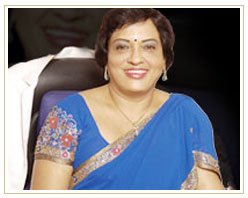
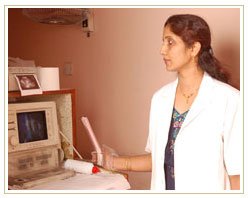
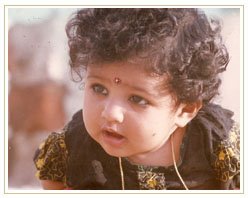
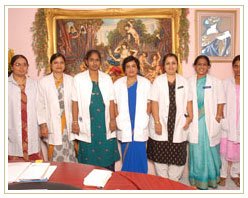
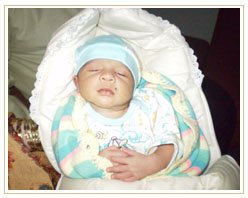
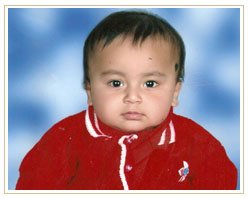
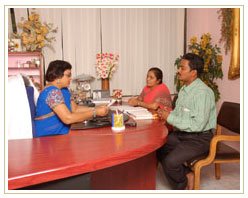
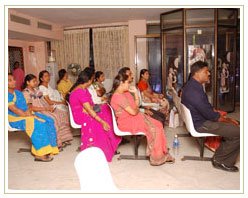
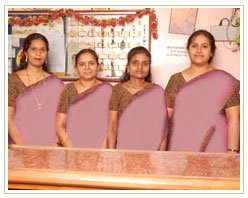


















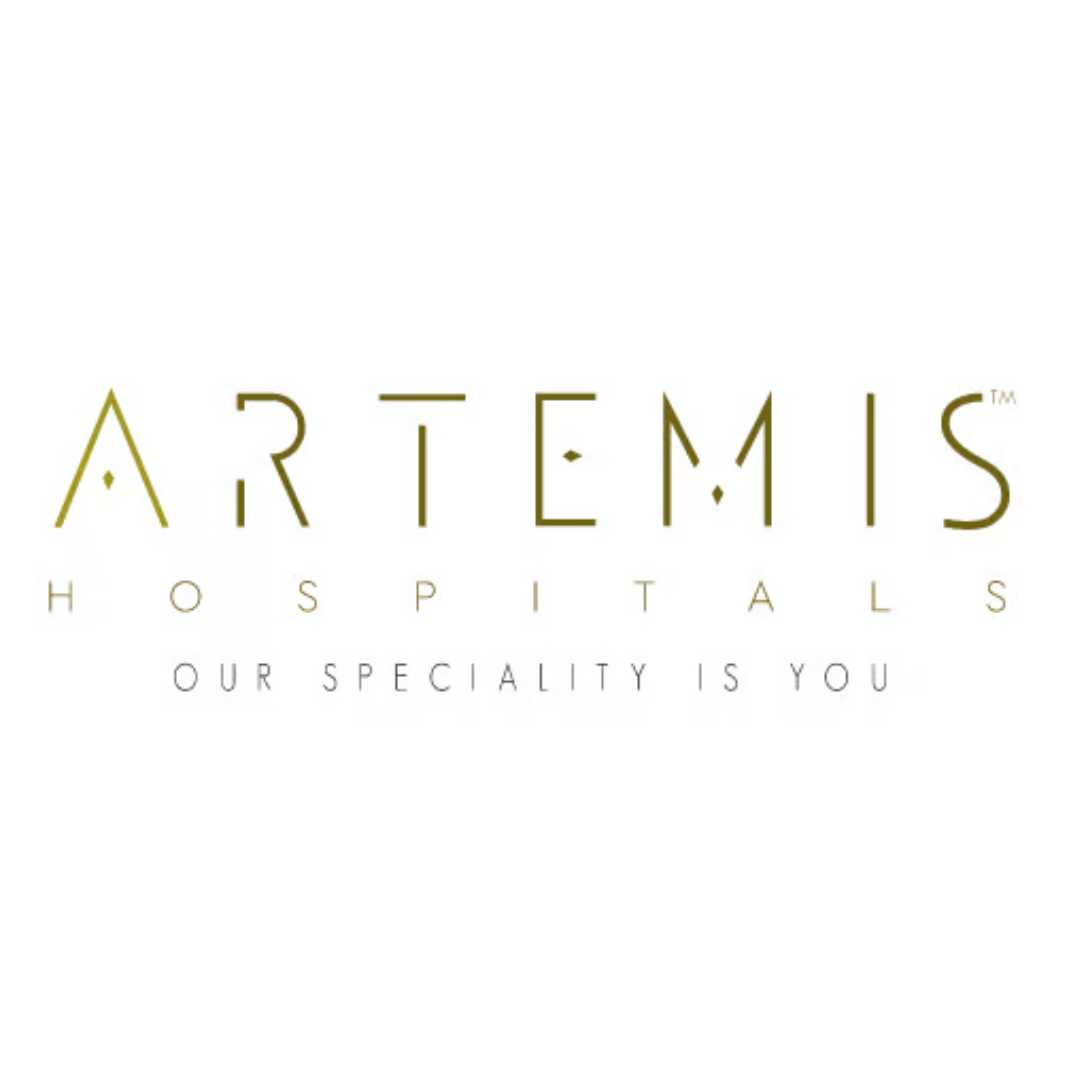

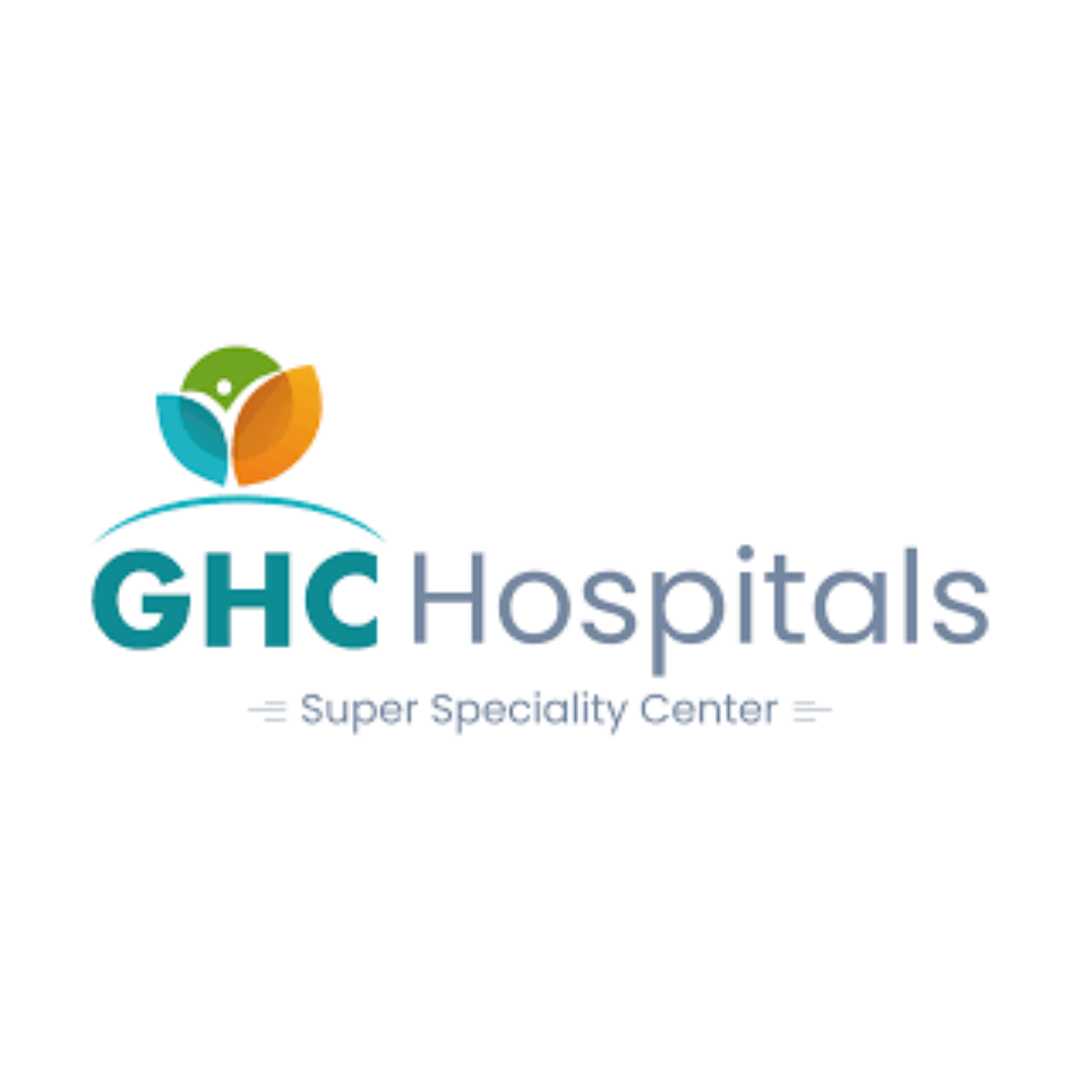
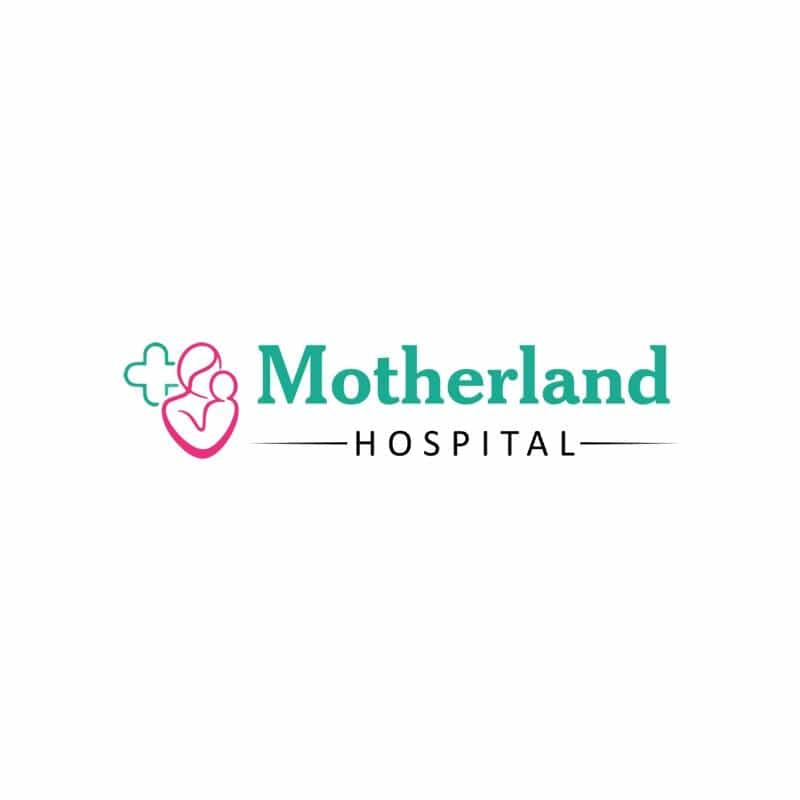
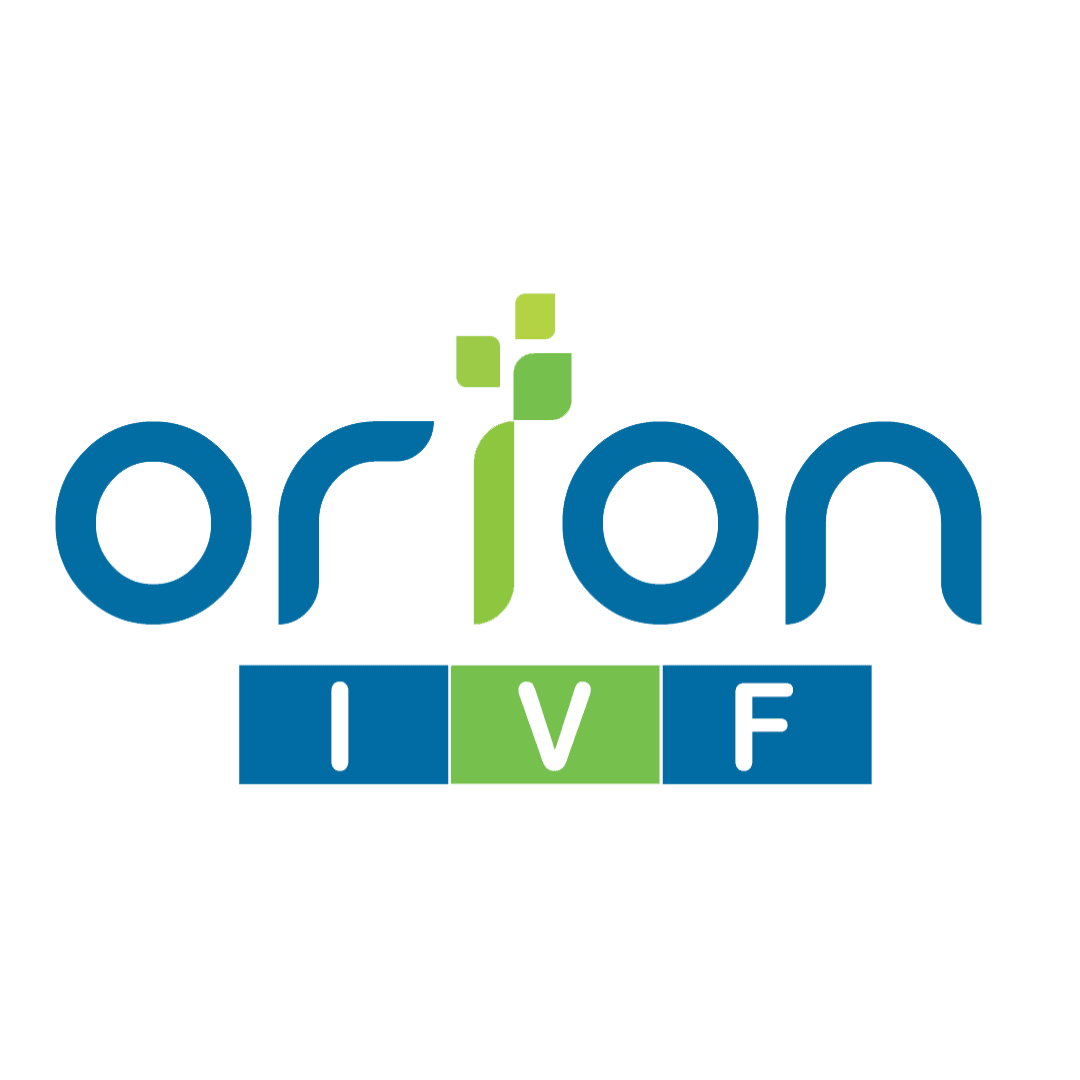

Share this listing